Mary Anne Yarde's Blog: The Coffee Pot Book Club , page 190
December 13, 2017
Christmas in the time of Alfred the Great ~ #history #Christmas @BritonandDane

 Christmas in the time of Alfred the Great.
Christmas in the time of Alfred the Great.By Mary Ann Bernal.
Celebrating Christmas in the Ninth Century
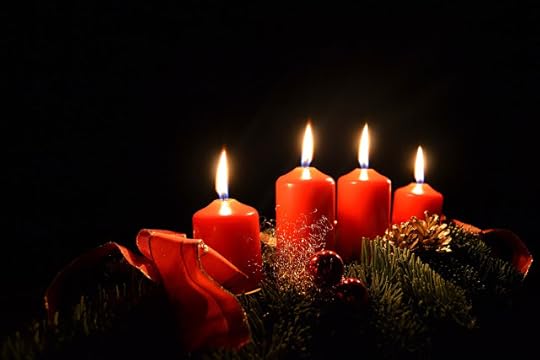
The court of Alfred the Great was Christian, deferring to the Pope in Rome for religious guidance. King Alfred rigorously enforced the Church’s mandates from fasting during Lent to Almsgiving throughout the year, and not just at Christmastime.
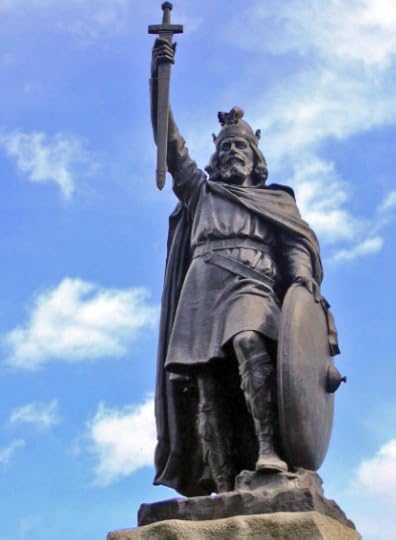 Alfred the Great ~ WikipediaThere was merrymaking and feasting, but it was also a solemn occasion; prayer and attending Mass was foremost, since the holiday celebrates the birth of Christ.
Alfred the Great ~ WikipediaThere was merrymaking and feasting, but it was also a solemn occasion; prayer and attending Mass was foremost, since the holiday celebrates the birth of Christ.During the twelve days of Christmas (the days prior to Christmas Day), the Christian community prayed at daily Mass, attended vigils, and participated in almsgiving, donating not only to the poor, but to the religious communities as well.
One must not forget the food. Meats included beef, pork, turkey and boar, which was a nice respite after having fasted on fish. Favorite vegetables were carrots, onions, parsnips and cabbage. Bread warmed on the hearth and everything was washed down with wine, mead and ale. Yes, there was always room for dessert with a variety of tasty pies or fruit, such as apples, plums and cherries. And like today, a great chef was worth his or her weight in gold.

Minstrels would play festive tunes and guests would dance; gift giving was also practiced.
Over the centuries, customs have come and gone, but the main reason for the celebration remains, celebrating the birth of Christ.
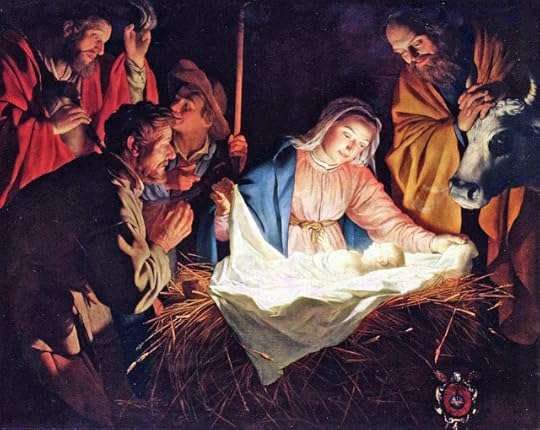
About Mary Anne Bernal
 Mary Ann Bernal is a family oriented, community activist participating in programs supporting the United States military. A guest on The Morning Blend television show hosted by KMTV, the CBS affiliate in Omaha, Mary Ann was also interviewed by the Omaha World-Herald for her achievements.
Mary Ann Bernal is a family oriented, community activist participating in programs supporting the United States military. A guest on The Morning Blend television show hosted by KMTV, the CBS affiliate in Omaha, Mary Ann was also interviewed by the Omaha World-Herald for her achievements.All of Mary Ann’s novels and short story collections are dedicated to fallen military heroes who gave their lives defending our freedom. A prolific writer originally hailing from New York, Mary Ann now resides in Omaha and has traveled for pleasure and research to the United Kingdom, Ireland, Italy and Greece. www.maryannbernal.com
The Briton and the Dane
The Briton and the Dane series transports the reader to ninth century Anglo-Saxon England, a tumultuous period in history, when the feared Vikings ravaged all of Christendom.
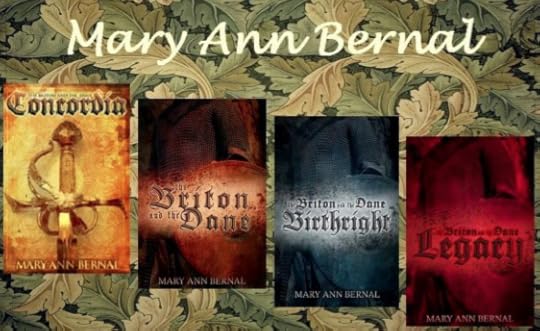
Amazon USAmazon UKSmashwords Barnes & Noble
Reference:
All images, unless otherwise stated, can be found on Pixabay

Published on December 13, 2017 23:00
December 12, 2017
Christmas in the time of the Roman Empire ~ #Christmas #HistFic @Oldbrookender


Christmas in the time of the Roman Empire
By Brian J. Kitchen.
How the Roman Army in Britannia celebrated Christmas.
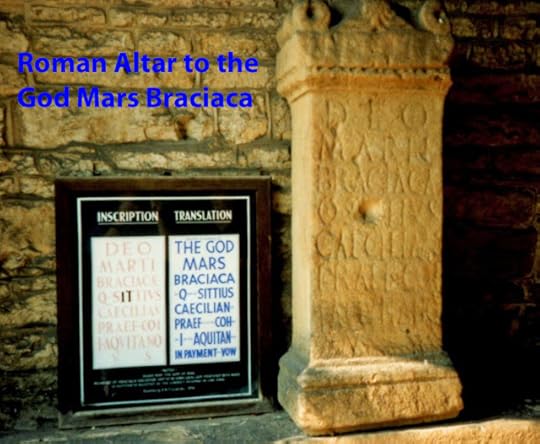
The Roman Army in Britannia at its maximum strength, had around 16,000 legionaries and around the same number of auxiliary troops. The soldiers came from all over the Roman Empire and would have worshipped a wide range of gods and goddesses, before Christianity became the Empire’s official religion. Some may have worshipped Sol Invictus, the ‘Unconquered Sun’ after the Emperor Aurelian made it an official cult in 274ad. The Emperor Constantine, had decreed in 321ad the dies Solis, the day of the Sun, and declared Sunday as the Roman day of rest. The birthday of the ‘Unconquered Sun’ was celebrated, with calendars dating the celebration to the 25thof December.Saturnalia had long been celebrated in the Roman world. Described as a festival of light leading up to the Winter Solstice (21st or 22nd of December), which itself was celebrated by many. Indeed, some writers described Saturnalia as being the merging of three winter festivals and the length of the festival varies in accounts from 2 to 7 days. All agreed however that Saturnalia took place during the period of 17th to 25th of December.
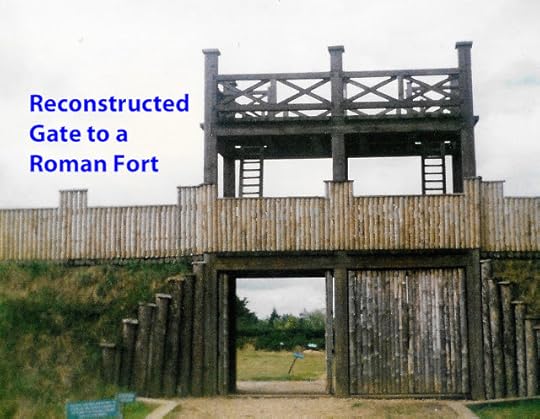
Constantine the Great was the first Roman Emperor to convert to Christianity. The son of a Roman Army Officer, Flavius Valerius Constantius, who had become Caesar in the Western Empire in 293ad and later Augustus (senior western emperor) in 305ad. Constantine had served in the Roman Army and had campaigned with his father in Britain. In 306ad after his father’s death, Constantine had been proclaimed Emperor at Eburacum (York) by the Army in Britain.When Constantine converted to Christianity and the Edict of Milan extended tolerance to Christians and ended their persecution, it was natural that the Christians would want to celebrate the birth of Christ. Unfortunately, due in part to the schisms in the Christian Church a date for this couldn’t be decided upon. The actual date of Christ’s birth wasn’t known, and a range of dates, March 28th, September 11thand November 18th had been put forward.By the 4th century, Christianity was becoming the more dominant religion and the edicts of the Emperor Theodosius which had made pagan religious ceremonies capital offences and by 392ad had prohibited all pagan worship, had left the Christian leaders with something of a dilemma. They were wise enough to know that banning a popular festival like Saturnalia would cause unrest. Also, many pagans had converted to Christianity on the understanding that they could still celebrate Saturnalia. So, there was only one thing that could be done, Saturnalia was adopted as a Christian festival and became in time Christmas.

So how did the late Roman Army celebrate the new festival of Christmas? As with all armed forces, a soldier’s duties do not cease with any holiday and for the Roman troops based on Hadrian’s Wall, the Saxon Shore and the Welsh frontier, it would have still been a time of vigilance, especially as in the later Empire, barbarian raids were becoming more common. For many of the troops and especially those from sunnier climates, the British winter, especially in the north of Britain, would have been an unpleasant shock. Anything which relieved the tedium of the short, dark winter days would have been welcomed and we can surmise that any festival would have been welcome.
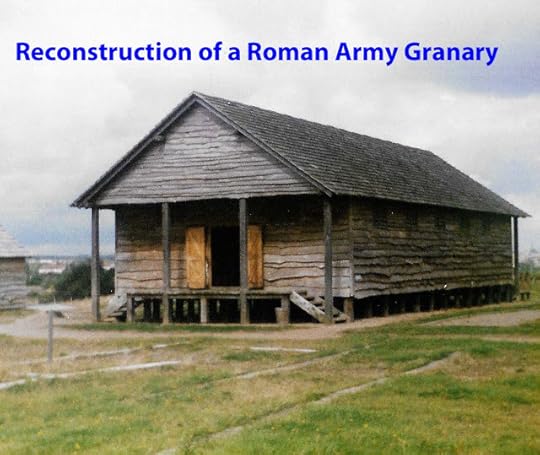
Gift giving had been a part of the Saturnalia celebrations and as we know it also became part of the celebration of Christmas. For those soldiers based on Hadrian’s Wall I think socks might have been a welcome gift. Indeed, correspondence on writing tablets found at Vindolanda one of the Roman Auxiliary Forts, located just south of the Wall contains requests for such items of clothing. Feasting and drinking were also Saturnalia customs, which again became part of the Christmas tradition. Correspondence recently found at Vindolanda contains requests from someone called Masclus for more beer to be supplied to his outpost. Gambling was another of the Saturnalia traditions and whether it too continued with Christmas taking precedence is unknown, but bone dice have certainly been found.

By the late fourth century the families of the soldiers based in Britain would have accompanied them and this is evidenced by the amount of material found such as women’s and children’s shoes, hair pins and brooches. Wooden swords obviously made as children’s toys have also been found and it begs the question as to whether they were made as Saturnalia, or Christmas gifts for a soldier’s children. The soldiers may also have exchanged their military helmets for the a pointed felt hat called a pileus during the celebrations. This had been a tradition of the Saturnalia celebrations, when it was traditional for all men regardless of status to wear them. The traditional Saturnalia greeting of “io Saturnalia” would no doubt in time have become “merry Christmas”, but it seems a lot of the ancient customs were maintained and continue to be maintained today.
About Brian J. Kitchen

Brian Kitchen lives in Burton upon Trent, England and enjoys walking in the countryside, photography, reading, writing, visiting museums and historic sites & buildings and supporting Burton Albion. He first became interested in the history of Roman Britain as a child and loved the Eagle of the Ninth trilogy of novels by Rosemary Sutcliff. The first of the Flavius Vitulasius novels, Divided Empire is his first published novel.Useful LinksWebsite Facebook
Divided Empire
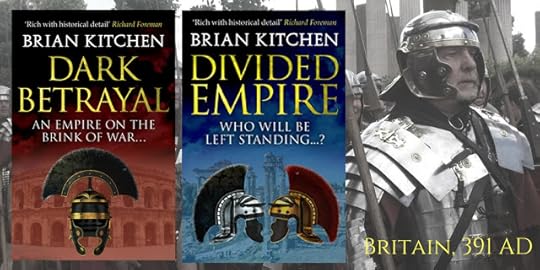
Amazon US Amazon UK

Published on December 12, 2017 23:00
December 11, 2017
Christmas in 17th Century Ireland #Christmas #history #Ireland @nancy_blanton


Christmas in 17th Century Ireland
By Nancy Blanton.
A look back at Christmas in Ireland
Could it be possible that anyone would actually cancel Christmas, the most wonderful time of the year? Considering the tumultuous nature of the 17thcentury, perhaps it’s no surprise that the celebration of Christmas would also have its ups and downs—so much so that at one point Christmas truly was banned.
In Ireland, Christmas first began as a pagan celebration around the time of the winter solstice, the shortest and darkest day of the year and the beginning of a new cycle. From these ancient times came the custom of decorating homes with holly, with its evergreen leaves suggesting the magical power to protect against the winter.
Another pre-Christian ritual that survives is the Wren Boys Procession. You can perhaps still see this event on the Dingle Peninsula and other towns on Ireland’s west coast. Taking place on St. Stephen’s Day, December 26, obviously it has taken on some Christian significance. Boys and young men dress, perhaps birdlike, in full suits and conical hats specifically made of oat straw. Historically, it was a day to hunt the wren, a bird of omen to the Druids, and blamed as well for the betrayal of Christian martyr St. Stephen. The killed birds were bound to the end of sticks and carried from house to house, where the carriers demanded money with the chant, “Give us a penny to bury the ‘wran’”. The money was then used for the celebration. ( Read more about the wren and its mythology here. )
The English king, Henry II, is credited with bringing the first Christian Christmas to Ireland in 1171. He hosted celebrations in a palace built specifically for him the year after Dermot MacMurrough and Strongbow (Richard de Burgo) took control of Leinster and most of Ireland’s east coast. Here Henry entertained Ireland’s leaders in high royal fashion:
“The feast of Christmas was drawing near, very many of the princes of the land repaired to Dublin to visit the King’s court, and were much astonished at the sumptuousness of his entertainments and the splendour of his household; and having places assigned to them at the tables in the hall, by the King’s command, they learnt to eat cranes which were served up, a food they before loathed.” ~ Giraldus Cambrensis, Welsh Chronicler
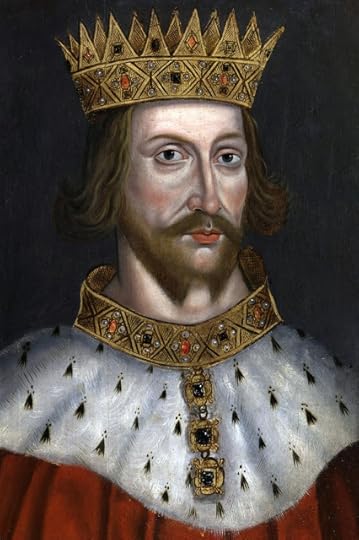 King Henry II
King Henry IIThe Christmas season would have followed the Catholic liturgical calendar starting with the 40 days of Advent, then Christmas Eve on December 24, and ending January 6th, the feast of the Epiphany, also known as Twelfth Night. Some believe the December 25th date for Christmas came from the Romans who used that date for the solstice festival. The date also falls nine months from the Annunciation, the Christian celebration of the day the angels told Mary she would conceive and give birth to Jesus. It is a topic of great controversy with many other dates suggested as being more likely.
King Henry VI proclaimed Christmas a public holiday in 1448, and the feasting, festivals, nativity plays, caroling and gift giving became solid traditions in both England and Ireland. But some thought Ireland took the feasting to an extraordinary level. Fynes Moryson was a propagandist traveling in Ireland during the early 17th century when it was useful for refined English nobles to think of the Irish as no better than savages. His description, to be taken with a healthy dose of salt, feeds that notion:
“Yea, the wild Irish in time of greatest peace impute covetousness and base birth to him that hath any corn after Christmas, as it were a point of nobility to consume all within those festival days. They willingly eat the herb shamrock, being of a sharp taste, which, as they run and are chased to and fro, they snatch like beasts out of the ditches.”
 King Henry VI
King Henry VITimes and traditions were soon to change.
In the 16th and early 17th centuries, Ireland was predominantly of Catholic faith, but the plantation of Munster and Ulster under Queen Elizabeth and James I, new Protestant settlers, Protestant government officials, and the implementation of anti-Catholic laws altered that demographic.
The king of England was also the king of Ireland and supreme head of the Church of England, after all. Anyone who did not attend Protestant church services was fined as a recusant. In extreme cases, to celebrate Catholic Mass was an act of treason for which people could be arrested, fined, and imprisoned or executed. To devout Catholics in Ireland, it seemed equally risky to denounce their faith and face excommunication and damnation.
Meanwhile, Puritanism was marching to a powerful majority. King Charles I began to press his own form of Protestantism, leading to the Bishops Wars with Scotland. Then came the Great Irish Rebellion of 1641, and the English Civil War of 1642. Finding the lavish celebrations for Christmas and other holidays vulgar and imprudent, in 1644 the Puritans made sure that Christmas was banned entirely. By 1650, soldiers were sent from house to house to enforce this ban and arrest any revelers.
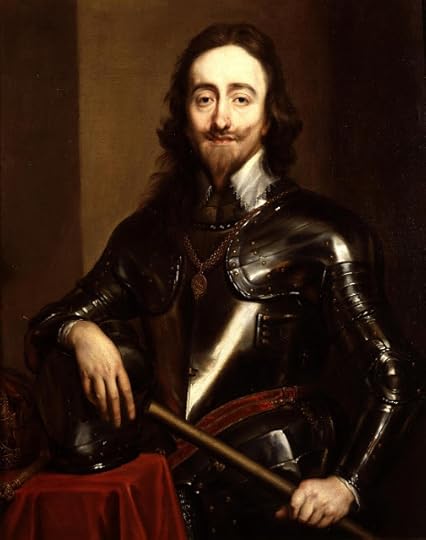 King Charles I
King Charles IAnd yet, people would not give up their beloved religious celebrations. Catholic households willing to host secret Mass would place a candle in their window just before it was to start, as a signal and call to other Catholics. To people not in the know, the candles seemed like nothing more than a modest decoration.
Ultimately, the English Parliament executed King Charles. Oliver Cromwell crushed the Irish rebellion with excessive cruelty. Protestants took possession of properties confiscated from Irish Catholics, and the religious majority shifted. Cromwell ascended as Lord Protector of the Commonwealth, the uncrowned Puritan king of England. By the time he died in 1658, English subjects were eager to restore the monarchy.
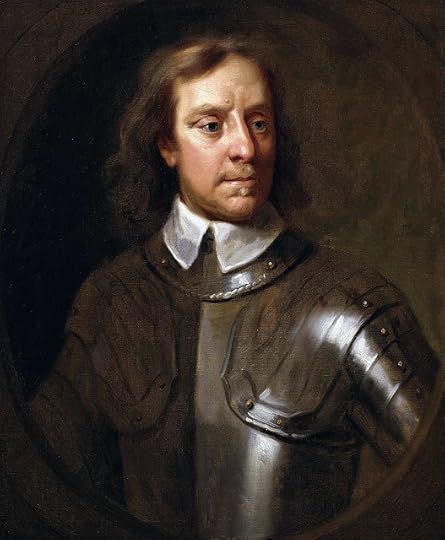 Oliver Cromwell
Oliver CromwellKing Charles II did indeed bring back Christmas celebrations in 1660 as part of the Restoration, and he became known as “the merry monarch.”
 King Charles II
King Charles IIToday, Christmas celebrations in Ireland are similar to those of the U.S. and other countries, with decorated trees, shopping and gifting, caroling, dancing and feasting. You may still see the holly wreaths on doors and windows, and the welcoming candles in the windows. Each symbol has its history.
Irish Christmas traditions
In closing, here are some continuing Irish Christmas traditions to adopt for your own:
· Put up your Christmas tree after December 8, the Feast of the Immaculate Conception. And go shopping on this day, with all the family along.
· Place candles in your windows, a sign of welcome and safety.
· Make Christmas pudding the traditional way, a rich fruit mixture with animal fat, wrapped in muslin and steamed.
· Celebrate “First Footing” on New Years Day, when visitors to the homes of friends and family bring a bag holding a lump of coal, a piece of cake and a coin, with the wish that the family may never be cold, never be hungry, and always be prosperous.
· And on Twelfth Night, January 6, celebrate Mother’s Day Off, traditionally the only day of the year when mothers were freed of their responsibilities. Thank goodness that has changed!
Nancy Blanton
 NancyBlanton is the author of award-winning novels based primarily in Irish history. The Prince of Glencurragh (July 2016), her second novel, is set in 1634 prior to the great rebellion of 1641.The book has won Florida's Royal Palm Literary Award for historical fiction and was named first runner up for Book of the Year. It has also medaled in the Feathered Quill Book Awards and is a top finalist in Amelia Island Book Festival's Book Island Literary Awards and M.M. Bennetts Prize for Historical Fiction.
NancyBlanton is the author of award-winning novels based primarily in Irish history. The Prince of Glencurragh (July 2016), her second novel, is set in 1634 prior to the great rebellion of 1641.The book has won Florida's Royal Palm Literary Award for historical fiction and was named first runner up for Book of the Year. It has also medaled in the Feathered Quill Book Awards and is a top finalist in Amelia Island Book Festival's Book Island Literary Awards and M.M. Bennetts Prize for Historical Fiction.Her first novel, Sharavogue, also set in 17th century Ireland, is the 2014 winner of Florida’s Royal Palm Literary Award.
Connect with Nancy at nancyblanton.com, on Facebook, and on Twitter.
The Prince of Glencurragh
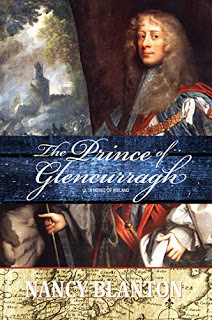 As the son of a great Irish warrior, Faolán Burke should have inherited vast lands and a beautiful castle, Glencurragh. But tensions grow in 1634 Ireland, as English plantation systems consume traditional clan properties, Irish families are made homeless, and Irish sons lose their inheritance. Encountering the beautiful heiress, Vivienne FitzGerald, Faolán believes if they were to marry, together they could restore his stolen heritage and build a prosperous life. But, because the Earl of Cork protects her, abduction seems to be his only option.
As the son of a great Irish warrior, Faolán Burke should have inherited vast lands and a beautiful castle, Glencurragh. But tensions grow in 1634 Ireland, as English plantation systems consume traditional clan properties, Irish families are made homeless, and Irish sons lose their inheritance. Encountering the beautiful heiress, Vivienne FitzGerald, Faolán believes if they were to marry, together they could restore his stolen heritage and build a prosperous life. But, because the Earl of Cork protects her, abduction seems to be his only option.Best friend Aengus O’Daly narrates as he and the brothers Thomas and Sean Barry help Faolán to complete the deed, and hasten to the Earl of Barrymore, who has promised to negotiate the marriage settlement. But Vivienne clearly has a mind of her own, and the adventure that began as a lark takes a dark turn when one man is injured, another is killed, and their plans for Barrymore’s support go awry.
Faolán now finds himself in the crossfire between the four most powerful men in Ireland—the earls of Clanricarde, Cork, Ormonde, and the aggressive new Lord Deputy of Ireland, Thomas Wentworth—men who use people like game pieces to be moved about for their own benefit. And other forces threaten their plans, and even their lives. With the course of events now beyond their control, will Faolán and Vivienne ever realize the dream of Glencurragh?
Amazon US Amazon UK

Published on December 11, 2017 23:00
December 10, 2017
Christmas with Uther Pendragon ~ #Christmas #Arthurian #legends @timwalker1666


Christmas with Uther Pendragon
By Tim Walker
Christmas with Uther Pendragon
…In fifth Century Britannia

Stars winked in the deep blue blanket above them as the promise of dawn seeped upwards from the distant edge of the World; a golden glow that prompted the start of the ceremony. Druids holding burning brands chanted to the steady beat of hand drums as a line of riders wrapped in bearskin cloaks breathed mist into the cold air, their rising vapour trails like souls from the departed buried beneath them making their way to the netherworld.
“Merlin, this had better be the sight you have much talked of,” King Uther growled, his horse stamping impatiently on the frozen earth.
“My lord,” Merlyn replied, “This is the dawn on midwinter day for which these stones were erected and aligned by the ancients who understood the movements of the sun and moon. We are blessed with a clear sight of the rising sun, and you will soon see it shine through yonder stone portal and light up the altar on which a sacrifice will be made to the goddess Beira for seeing us through another winter…”
“My lord!” Bishop Andreus interrupted, causing Uther to turn to his left.
“What is it?” Uther demanded of the shivering, tonsured priest.
“Beira is a pagan goddess of the druidic religion of the dark forests, banned by our former Roman masters” he said through chattering teeth. “It is not long since the people bowed to the Roman god Saturn at their feast of Saturnalia…”
“And what is your point?” Merlin challenged.
“My point is, the Romans have now departed, taking their gods with them! The old ways are passing into legend as the one true Christian God banishes them to the dark corners of this land. I urge you to turn away from this base pagan bloodletting and embrace this day as the feast day of the birth of our savior, Jesus the Christ. For our God is the one true light of the world…”
Uther raised a hand to silence him. “Save the sermon for later, father. Now let us bear witness to the mystery of nature revealed to us.”
Merlin guffawed and pointed, drawing Uther’s attention away from the fretting priest towards the stone altar and the light now bathing it in an eerie glow. Three druids stepped from the shadows, each holding a struggling creature in one hand and a raised knife in the other. Fowls clucked their desperation and kids screamed as their throats were cut and their blood dripped into silver goblets. The drummers increased their tempo as men and women dressed in animal skins and masks danced around the altar where the druids chanted to the rising sun.
“This is an impressive sight,” Uther said, grinning his pleasure at Merlyn. Bright sunlight was illuminating a hitherto unseen ceremonial avenue from east to west that cut through the centre of the stone circle. A golden shaft beamed through the windows of the largest pairs of standing stones on opposing sides of the circle, now in perfect alignment with the rising sun, like a bolt from the gods.
“From this day onwards, our days grow longer,” Merlyn said, “and hope is restored to the people after the darkness of winter, and the earth is reborn.”
“You are forgiven for calling me out on such a cold night,” Uther said to Merlyn with a smile. He turned his horse to signal his readiness to leave and remarked to Bishop Andreus: “And we shall pray to the baby Jesus when we return to my hall, then raise a goblet to ALL the gods and pray for a successful campaign against the Saxons! Onwards!”
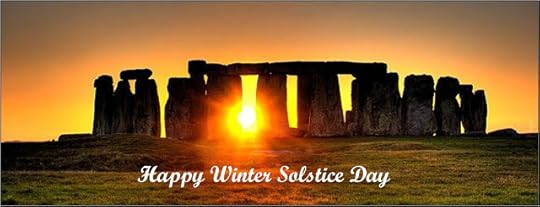
Tim Walker
 Tim Walker is an independent author based in the UK.
Tim Walker is an independent author based in the UK.His latest book is Postcards from London - a book of short stories that explores London's past, present and imagined future. This follows an historical fiction novel, Ambrosius: Last of the Romans, set in Britain in the fifth century, launched in early 2017. Book two in the series - A Light in the Dark Ages - it follows on from, Abandoned! Both titles have found a wide readership since their re-launches in April 2017 with new content and covers.
He lives in Datchet Village, near Windsor, beside the River Thames, the inspiration for his book of short stories, Thames Valley Tales.
Tim is currently writing Uther’s Destiny, book three in his series, A Light in the Dark Ages. This novel is due out in March 2018.Connect with Tim ~ Website
Abandoned
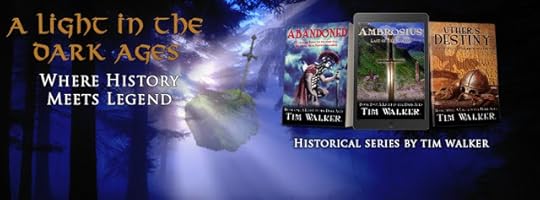
Book One, Abandoned! (a novella) – Amazon Book Two, Ambrosius: Last of the Romans (a novel) – Amazon

Published on December 10, 2017 23:00
December 9, 2017
A Christmas memory of World War II #Christmas #History #WWII @berylkingston


A Christmas Memory of World War II
By Beryl Kingston.
Christmas in WW2
I spent the first Christmas of the war in Felpham in West Sussex, where I’d been evacuated with my family and it was during one of the worst winters that I can remember. It snowed for months, the Thames was frozen for eight miles from Teddington to Sunbury. And Christmas shopping, such as it was, was done over slush filled roads and pavements as the snow fell.

We walked to school along the seafront through drifts that were higher than our wellington boots, I had chilblains on my toes, fingers and earlobes, the whole world was black and white and even the sea froze, with great chunks of ice clonking against one another as the tide came in. The school I was with put on a play on the Pier Theatre in Bognor Regis, to cheer us all up but the pleasure of it was ephemeral. The local kids and the evacuees had massive snow fights every week. There was plenty of snow for it and we used a huge flint with lots of rough edges inside each snowball. Some of us nicked the local dustbin lids to use as shields. It was very exciting but there was certainly an edge to it. The rations hadn’t really started then, so there was a chicken for Christmas dinner and a Christmas pudding afterwards. But that was in the phoney war. By the next August the real war had begun. My mother had taken us all back to London at the end of the summer term. She was sure there wasn’t going to be a war and that we were going to make it up with the Germans and the Germans were then going to fight the Russians. Well she got the last bit right! But we were back in the city neatly in time for me to watch the first blitz on London and the bombing of Croydon airport, which I saw from the flat roof of a block of flats in Croydon. From then on, the Germans bombed us every night and by Christmas 1940 this was the sort of scene you were most likely to see in the streets of London.

We took refuge in the cellar under the house and stayed there every night from the time the siren sounded until the all clear went, which was usually just after nightfall until just before dawn. I am writing about it all at some length in my current novel, which is the 30th. But I also wrote about what it was like to be bombed out, in a small chunk of autobiography, and that is fairly accurate because I kept a diary account of everything at the time, writing in the first person singular, as though I was the child to whom it was happening. It makes the language simple and the understanding of the situation limited, but it’s accurate. “Tonight they've started up really early. We've barely had our tea. Pat's gone to bed but they've let me stay up and listen to the wireless.'Never a dull moment,' Gran says. 'I'll just put the dishes in to soak Ella. You go down.'We can hear her clattering about as we wrap ourselves in our eiderdowns and settle into the chairs. It's a normal sort of night although a bit noisier to start with. The air's full of coal dust, Pat's in her camp bed, the cat's in her basket, the cards are on the table. Gran makes three mugs of cocoa and brings them down for us and we play cards for an hour or two and I keep the score. Then there's a bit of a lull and Gran goes up to see Aunt Jane. It makes me want to go too. So when she gets back, I sneak away while it's still quiet. When I get to the passageway that leads to the kitchen I'm of two minds whether to go to the kitchen toilet or to risk the one upstairs. In the end, I risk the one upstairs, which is a mistake, because while I'm still sitting on the toilet, I can hear the Germans arriving, and by the time I pull the chain, they're right overhead. I must look sharp and get back.I'm half way down the stairs when I hear the first bomb falling. It makes an awful screaming sound as it comes down and it's very very close. The explosion makes my ears ache. I can hear glass smashing and things falling and the next bomb's screaming down and this one's even nearer and much louder. I'm so frightened I can't move or call out or swallow or anything. I just stand in the hall and wait. I know there are six bombs in a stick and try to count them, but the next one is screaming so close to me that I know it will fall through the house and explode here and kill me. I try to pray. 'Please God don't let it kill me. Let it drop somewhere else. Please!' But it explodes before I can finish and it's so close it shifts the ground under my feet. I can feel it rippling as though it's been turned to water. Then there's more screaming and another explosion and I think it's on the other side of the house but I can't be sure because there's a terrible roaring sound coming from the dining room and the hall is full of dust, clouds of it, swirling and buffeting.Mum and Gran are beside me somehow and they're taking an arm each and they're sort of jogging me down to the cellar. I feel sick and my legs aren't working properly and I'm doing that awful shaking, all over, even in my stomach.They ease me onto a chair and wrap me in my eiderdown because I'm freezing cold and Gran gets a bottle and pours out some stuff that looks like water and smells sweet. 'Drink this,' she says. 'There's a good girl. It'll make you better.' So I drink it as well as I can for shaking. It's cool in my mouth and burning hot going down my throat but it doesn't make me feel better. It makes me feel so sick I don't know what to do with myself. 'What is it?' I ask Gran.'Gordon's Gin,' she says. 'It's good stuff. Just lie still and give it a chance to work.'I lie still for ages and the noise of the raid goes on all round us. 'They've bombed our road, haven't they?' I say to Mum.'Yes,' Mum says grimly. 'They have but it's over now. Are you warmer?'I tell her I am, because that's what she wants me to say, but I'm still very cold and still shaking. It takes ages and ages before I can stop.'Well that's it, 'Mum says to Gran. 'We're not staying here.''It's all right saying that,' Gran says. 'Where can we go?''You leave it to me,' Mum says. 'I'll fix it.'She will too. I'm so glad she's my Mum. She's so brave and she always knows what to do.” That year, Christmas was the first time that Londoners hadn’t been bombed since the beginning of September and by then, my mother had evacuated us all for a second time. As my grandmother said ‘never a dull moment’.
Beryl Kingston
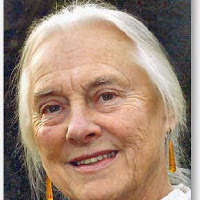 I was born in 1931 in Tooting, and when I was four was enrolled at a local dancing school run by a lady called Madam Hadley, which I attended until I was eight when the war began. Because of the war my school career was – shall we say – varied. I was evacuated twice, the first time to Felpham which is near Bognor Regis and the second to Harpenden in Hertfordshire, and consequently went to ten different schools. I ended up at Streatham Secondary School, an LCC grammar run on the Dalton system, which offered a few lessons as sparking points and then required pupils to be responsible for their own learning, either in study rooms with their teachers on hand to help and advise, or on their own in the library or the school hall. It suited me to a T. Then to King’s College London, where I read English and enjoyed myself a lot, but wasn’t particularly distinguished, having other things on my mind by then...
I was born in 1931 in Tooting, and when I was four was enrolled at a local dancing school run by a lady called Madam Hadley, which I attended until I was eight when the war began. Because of the war my school career was – shall we say – varied. I was evacuated twice, the first time to Felpham which is near Bognor Regis and the second to Harpenden in Hertfordshire, and consequently went to ten different schools. I ended up at Streatham Secondary School, an LCC grammar run on the Dalton system, which offered a few lessons as sparking points and then required pupils to be responsible for their own learning, either in study rooms with their teachers on hand to help and advise, or on their own in the library or the school hall. It suited me to a T. Then to King’s College London, where I read English and enjoyed myself a lot, but wasn’t particularly distinguished, having other things on my mind by then...A Family At War
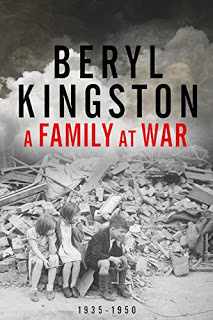
This is a story for people who want to know what it was really like to be a child during the war and in the London Blitz. But it will also interest people who can't understand how anyone would want to deliberately hurt a child or an animal, since at its centre is a closely observed character study of an abuser, cruelty, selfishness, bravery under fire, fantasy world and all.
Amazon

Published on December 09, 2017 23:00
December 8, 2017
Christmas as a Prisoner of War... #Christmas #history #WW2 @Suzy_Henderson


Christmas in CaptivityBy Suzy Henderson
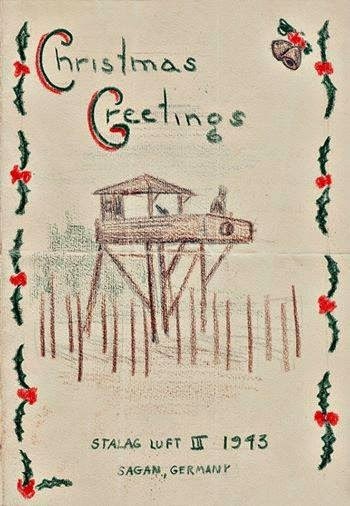 Wikimedia commons
Wikimedia commons Much has been written of Christmas in World War Two, especially on the homefront. Making do and mend became a household slogan. The war brought much hardship and misery but, as a testamentto the resilience of the human spirit, Christmas was still a time to look forward to for many. The approaching festive period was a glimmer of light in an otherwise dark world, although for some it was still a difficult time. People worried about loved ones who were away fighting while others mourned the fallen. But overall, many looked forward to the festivities or at least tried to, hoping for a little respite from war.
But what of those who found themselves to be guests of the enemy?
 Wikimedia commons
Wikimedia commons The captured British and Allied forces faced a hard life inside a German pow camp. Food was limited and the diet poor while disease was rife, conditions and treatment harsh. One American PoW recalled how the Jewish-American’s at his camp mysteriously vanished and when the German commanders could not determine whether a man was Jewish, he would vanish anyway simply to fulfil a quota.Nothing was certain,and death waited in the wings, yet even in the darkest of days, Christmas shed a little glitter for all those imprisoned too. It brought purpose and meaning to their everyday mundane lives, providing an opportunity to keep busy, to plan and create for the day. Those who had been imprisoned for a while looked forward to a hearty meal on the day, given that they had squirrelled away provisions from their Red Cross parcels for some time in preparation for the festivities. Improvisation was key,and toilet paper made good streamers, coloured by hand with crayons and hung in the huts from wall to wall. Menus createdfrom pieces of card saved from the Red Cross parcels graced tables.
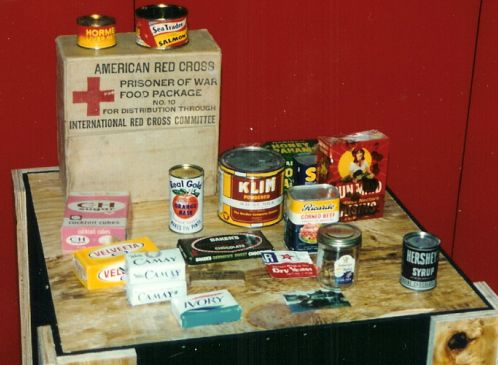 Wikimedia Commons
Wikimedia Commons The troops had to make the best of their lot and Christmas was an excuse to ensure there was a little festive cheer for all. The Red Cross parcels were such a treat at this time and brought more than a little cheer to each prisoner, bolstering their meagre provisions.
John Crook’s war ended during the 1943 Allied landings in Italy. The former Cambridge University academic was serving as a private with the 9th Royal Fusiliers when he was captured and taken to Stalag Luft VIII-B camp in Poland. He was there for two years, and although it was harsh, letters he wrote home were wholly positive, no doubt as he tried to reassure his parents and allay their worries. In letters home he mentions December 1943, and talks of singing carols, putting on a concert, decorating the barracks with paper chains and a pantomime.
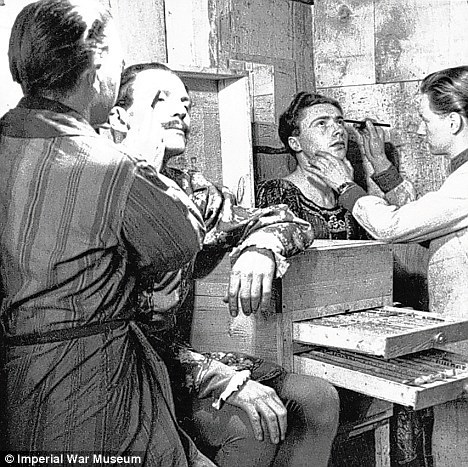 Image courtesy of the Imperial War Museum
Image courtesy of the Imperial War Museum He refers to “very Xmassy weather” which no doubt points to the extreme cold temperatures in their barracks, exacerbated by a lack of appropriate bedding and clothing for winter. In a letter he wrote home on Christmas Day 1944, he talks of how the men organised a dance and a concert and even put on “their best khaki slacks” as they dressed for the occasion.
As the Soviets advanced in the later stages of the war in 1945, Crook was one of 80,000 POWs, forced to march west in the harshest winter. He was lucky to survive the “death march” as many of his comrades succumbed to the cold and hunger along the way.
One example of a Christmas menu from Rotenburg Camp, Germany 1943:
Breakfast: porridge and eggsLunch: cold corned beefDinner: steak and onions followed by Christmas pudding.
The American Red Cross packed and shipped around 75,000 Christmas parcels in the summer of 1944 which contained items such as canned turkey, fruit cake, tobacco, games and Christmas decorations. In Stalag Luft III, Sagan, Garmany, the POWs were allowed to roam freely around the grounds on Christmas Eve and Christmas day night. Alcohol had been made in various camps by fermenting raisins procured from aid parcels. At Stalag Luft III there was a Christmas pageant. In some of the camps, guards gifted small Christmas trees and dinner was served in the barracks.
Conditions for Germans captured by the Allies were better than those offered by the Russians, mainly becausethe Allies complied with the Geneva Convention and the Soviets did not. After the D-Day landings in June 1944, there was an influx of German prisoners of war into Britain. Initially, although Britain urgently needed more labour, especially on farms, Italians were used rather than Germans. However, by March 1945, around 70, 000 Germans were working around Britain. While allowed to celebrate Christmas in the camps, from December 1946 they were invited as guests in British homes for the festivities, developing friendships with the locals. A number of them would opt to remain in Britain rather than return to their now devastated homeland.
 Image By Ministry of Information Photo Division Photographer [Public domain], via Wikimedia Commons
Image By Ministry of Information Photo Division Photographer [Public domain], via Wikimedia Commons For one German soldier, an 18-year-old captured in Normandy earlier in 1944, Christmas was particularly difficult as he was so homesick. Here is an extract from a diary he kept:
CHRISTMAS 1944 – BEHIND BARBED WIRE
On 24 December 1944, we celebrated German Christmas, the festival of joy, behind barbed wire. Everyone looked forward to the festival, and the preparations were in full swing. We had the most beautiful Christmas tree in the camp, and we had decorated our hut with pictures and fir-twigs. When the Holy Eve arrived,the preparations were complete. Outside on the camp square, the Christmas tree lights were lit, the choir sang carols and the camp leader spoke some appropriate words. Then we all went into the huts, each to celebrate the Christmas feast.
Assembled under the glow of the Christmas tree we sang the most beautiful songs about Christmas and about home. One of the comrades spoke about home and about our fate, and brought us so near to home that all of us had tears in our eyes, and thus many went out silently into the holy night. At every bedside the candles burned and every one of us dreamed of home, and in our thoughts we were at home in the midst of our loved ones.
When the Commandant went around the huts to pick out the three best ones, ours got the second prize out of 25 huts. He was very pleased with the cleanliness and tidiness of the huts with their Christmas decorations. We had shown him a real German Christmas.
Suzy Henderson
 SuzyHenderson was born in the North of England and initially pursued a career in healthcare, specialising as a midwife. Years later, having left her chosen profession, she embarked upon a degree in English Literature and Creative Writing at The Open University. That was the beginning of a new life journey, rekindling her love of writing and passion for history. With an obsession for military and aviation history, she began to write.
SuzyHenderson was born in the North of England and initially pursued a career in healthcare, specialising as a midwife. Years later, having left her chosen profession, she embarked upon a degree in English Literature and Creative Writing at The Open University. That was the beginning of a new life journey, rekindling her love of writing and passion for history. With an obsession for military and aviation history, she began to write.It was an old black and white photograph of her grandmother in her WAAF service uniform that caught Suzy’s imagination many years ago. Her grandmother died relatively young in 1980, and her tales of war vanished with her forever, stories she never had the chance to share. When Suzy decided to research her grandmother’s war service, things spiralled from there. Stories came to light, little-known stories, and tragedies, and it is such discoveries that inform her writing today.
Having relocated to the wilds of North Cumbria, she has the Pennines in sight and finally feels at home. Suzy is a member of the Historical Novel Society and "The Beauty Shop" is her debut novel, released 28th November 2016. She is currently writing the next book.
The Beauty Shop
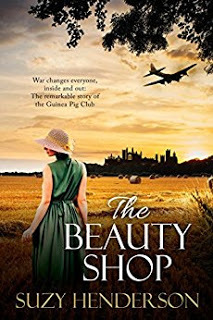 War changes everyone, inside and out. The remarkable true story of the Guinea Pig Club.
War changes everyone, inside and out. The remarkable true story of the Guinea Pig Club.England, 1942. After three years of WWII, Britain is showing the scars. But in this darkest of days, three lives intertwine, changing their destinies and those of many more.
Dr Archibald McIndoe, a New Zealand plastic surgeon with unorthodox methods, is on a mission to treat and rehabilitate badly burned airmen – their bodies and souls. With the camaraderie and support of the Guinea Pig Club, his boys battle to overcome disfigurement, pain, and prejudice to learn to live again.
John ‘Mac’ Mackenzie of the US Air Force is aware of the odds. He has one chance in five of surviving the war. Flying bombing missions through hell and back, he’s fighting more than the Luftwaffe. Fear and doubt stalk him on the ground and in the air, and he’s torn between his duty and his conscience.
Shy, decent and sensible Stella Charlton’s future seems certain until war breaks out. As a new recruit to the WAAF, she meets an American pilot on New Year’s Eve. After just one dance, she falls head over heels for the handsome airman. But when he survives a crash, she realises her own battle has only just begun.
Based on a true story, "The Beauty Shop" is a moving tale of love, compassion, and determination against a backdrop of wartime tragedy.
Amazon

Published on December 08, 2017 23:00
December 7, 2017
A Rinefield Holiday Celebration by M.T.Magee #Historicalfantasy #Romance @Mtmagee1013M


A Rinefield Holiday Celebration by M.T.Magee

This time of year, one often thinks of enjoying gatherings with family and friends, while welcoming in the start of the winter season. And what better way to begin your holiday reprieve than with a fantastical journey to the award winning mythical realm of Rinefield. A mystical realm filled with romance, adventure and inspired by the whispers of Gaelic legend. Both books, The Treasure of Gwenlais and Child of the Kindred, will take you on an excursion where adventure is common place, the pubs warm and welcoming, family gatherings loud and rowdy fun, and of course romance is all encompassing. Here is a first glimpse into the realm with a scene from The Treasure of Gwenlais, where Princess Laurel of Gwenlais is given her official introduction to the neighboring kingdom of Heathwin. Romance is blooming as the festival you will be attending is held in “the planting season”. Heir to the throne of Heathwin, Prince Caleb, finds himself utterly enchanted by the young Princess of Gwenlais, no longer able to hold back his growing feelings for her. In this scene imagine yourself attending the official introduction of Princess Laurel, dressed in your finery with the other Chieftains and Dignitaries, as you begin a romantic and captivating waltz.

The Treasure of Gwenlais
Laurel began to recognize the dance being of a sensuous and romantic nature, she blushed but watched in fascination, as the couples were moving slowly and gracefully together. Caleb watched her face as she looked at the couples dancing slowly, their bodies moving in perfect time, always touching, apart for only moments.
“Do you know this dance?” he asked her softly, his voice caressing her ear.
“I have seen it, but I have never been permitted to actually participate,” she answered, still watching in fascination.
“Would you like to?” Caleb asked her quietly, moving his hands to her waist again.
“I...I do not know how,” she whispered breathlessly, still watching completely captivated.
“I will show you. I know it very well,” Caleb whispered back seductively.
She looked up at him to find him smiling at her, his eyes glowing and penetrating, burning through her.
“Very well. I hope I do not embarrass you,” she said shyly, laughing nervously.
“I am not worried in the least,” Caleb said reassuringly.
Caleb took her hand and led her to the floor, as they stood in front of each other.
Listening carefully to the melody, waiting for the next movement which happened in a moment’s time. Caleb pulled Laurel gently to him, their bodies flush against each other. Caleb moved his hand to her waist, placing her hand on his chest, he moved her forward having her follow him as if she were pushing him backward. She looked at him, her eyes wide and slightly startled, by the passionate nature of the movements the dance was evoking. Caleb continued to look in her eyes, smiling warmly at her as she moved to keep up with him. She turned to look at the others around them, Caleb gently turned her face.
“Look at me love, only me. Imagine we are the only people here,” he said to her softly.
He then gently turned her around several times until her back was to him.
He placed his arm around her waist placing her left arm about his neck as he gently lifted her off the floor and twirled her around as her gown swirled around them like a billow of smoke. He placed her down and turned her so she was facing him once again. He took her in his arms holding her closer than he ever had, having her place her arm over his shoulder holding her other hand in his placing it in the air, their arms supporting each other. He moved her across the dance floor in an effortless fluid motion. Twirling gracefully, Laurel felt there were times they were not touching the ground. The entire time her eyes never leaving his face as he had asked her. As the rhythm of the melody changed again he released her from his embrace and twirled her around several times again with his arm as he moved forward. He stopped abruptly as the tempo halted for a moment, only a single cymbal could be heard. He slowly bent her backward his hand resting on the small of her back, bringing his face down to her neck as she reached up and grasped the back of his neck for support. He then brought her back up to him quickly, making her catch breath, her eyes opened wide with surprise, as he continued to smile at her lovingly. Taking her in his arms again he repeated the dance by moving her gracefully across the floor. Once more the tempo changed as he placed her hand against his chest and his hand at her waist once more. Only this time she was ready for the next motion and moved with him unresistingly as he moved backward, drawing her with him. Aiden watched them from across the floor and was intrigued by how quickly Laurel was able to follow and adjust to the constant changing of the music’s tempo. Caleb was patient and loving in his direction.
They are really quite distracting, Aiden thought as he grinned watching them.
So much so, other couples also noticed them, slowly beginning to stop dancing to watch them move in perfect harmony with each other.
Caleb again twirled Laurel several times until she was facing away from him. Laurel laid her head back against him. Closing her eyes as she placed her arm around his neck, her right arm over his as he placed it tightly around her waist. Caleb turned his face into her neck as he gently lifted her off the floor twirling her about again, the gown giving the illusion that they were enveloped in cloud of deep blue smoke. Caleb placed her gently down and turning Laurel once more to face him, took her in his arms holding her close to him resting his lips against her forehead. They held each other, eyes closed, moving slowly in perfect time with each other as the music’s tempo began to slowly wind down. Moving ever slowly until the music directed them to stop. They stood still for a moment listening to each other’s breathing. It was only until they heard the sound of applause did they open their eyes. Laurel and Caleb were both surprised to find it was for them. Laurel blushed her cheeks blazing. Caleb held her, smiling down at her. He softly kissed her forehead, before taking her hand and leading her off the floor, as she was smiling but overwhelmed by the attention they received.
Laurel could scarcely breathe as they walked together, her heart racing with the exhilaration she felt from the passionate dance.

This is only the beginning of the growing passionate romance between Caleb and Laurel. The second book in the series Child of the Kindred finds you in a more intimate setting of “the family gathering”. Where the large and boisterous family of Prince Caleb holds a wonderful warm event each winter. Held at the Great Lodge, the dwelling of the royal household of Heathwin, the entire family come to together to enjoy each other’s company before the full harshness of winter blankets the kingdom. Feasting and general merry making is the order of the day at this yearly gathering. This scene you will join members of the family on a joyous treasure hunt with some of the youngest family members. This game is called Search and Find.

Child of the Kindred
“Alright everyone, let us all look carefully at the map, as we are going to have Search and Find in another part of the Lodge this season. Ardal, seeing as you are the oldest, you will be the map keeper. Beacam, as you are Ardal’s brother, you will be his second. Are you both ready to lead the group?” Caleb smiling, asked them with an officious voice.
“Yes Sir!” both brothers answered with broad smiles.
“Outstanding. Now as the map keepers, you are both responsible for leading the group, but also to help point out the clues. Now we need to remember, everyone gets at least one treat or present, if you have more than two, look to see if you can share with anyone. Are we all clear with this?” Caleb asked, as Queen Alana along with all the mothers, handed each child a basket with a handle.
“Yes!” all the children answered in happy unison, their faces all excited with what lay ahead.
“Alright then. Ardal, looking at the map, which direction do we head in?” Caleb asked him, smiling warmly as he watched Ardal studying the map intently.
After looking at the map for a few moments, Ardal looked up and studied the walls in front of them, and then smiled pointing at one of the doors.
“Over there. We go out the door that has the tapestry of the Scimitar hanging above it,” Ardal announced happily.
“Excellent Ardal. Let us get started then,” Caleb directed, as the children ran laughing and giggling towards the door.
The noisy, excited group made their way down the broad corridor. Before too long, Beacam brought the next clue to Ardal’s attention, which caused the boy to stop walking, and look about the wide corridor intently.
“Now what exactly are we looking for Ardal?” Cahir asked smiling.
“The map says we are to look for three lights,” Ardal answered with a bemused expression.
Everyone stopped and looked round about, as the corridor had lanterns hanging on the wall, but none placed in groups of three.
“There!” Jamison suddenly called out, as he pointed out one of the windows.Looking straight ahead, stood three lanterns hanging from a post just outside. Under the window was a large wooden trunk with shiny brass hinges.
“It must be the chest!” Oriel said delightedly, as she ran forward to open up the trunk, with the other children following close behind her.
Oriel and Ardal opened the heavy lid of the trunk together, and to the children’s delight, found it filled with wooden toys, noise makers and whistles of all description. As well as soft cloth dolls, and confections wrapped in bright coloured paper. Oriel began handing out the treats, in overstuffed handfuls.
“Oriel dearest. You are supposed to let everyone choose for themselves please,” Caleb directed, laughing lightly.
“But I am helping Caleb, then everyone will get some,” Oriel explained, smiling excitedly as she continued to fill the children’s baskets.
“She is a bossy little thing. Are you sure she is not related to Laurel?” Cahir asked quietly, smirking at Caleb.
“Yes, the similarities are uncanny,” Aiden answered, laughing heartily.
Caleb just shook his head smiling, as he watched Oriel continue to fill everyone’s baskets.
“Oriel my girl, that is enough. We have not even reached the main room as yet. There are still more things to find,” Caleb directed, grinning at her.
“Look Orrie, the map says we need to keep going down this way,” Ardal showed her, as he pointed down the corridor straight ahead.
The children all ran down the hallway laughing noisily, following Ardal and Oriel. Ardal looked at the map and showed Beacam the next clue. They stopped running to think about the picture on the map, showing where the next treat would be hidden. It showed a picture with two large windows, as well as a picture which made both brothers grin and look at each other.
“It is a picture of a bald head,” Beacam announced with a bemused grin.Everyone laughed, and then the search for the two large windows began as the children ran down the hallway once again. They all stopped when they entered the widest part of the corridor, and to their right stood two, floor length windows, overlooking the side yard.
“This is where the next surprise is supposed to be,” Ardal announced, as everyone stopped once again to look about.
“Do we need to look for a bald head?” Tolemais’ son Rory asked loudly, causing the children to laugh.
“I have not chopped off any bald heads lately. Have you Cahir?” Aiden asked, amid much laughter.
“No, not lately,” Cahir answered back, making a face, encouraging the children’s amusement.
“Look at the picture again Ardal,” Caleb directed, grinning drolly at the two of them and shaking his head.
With this, all the children moved in closer to look at the map, except for Quinlan’s two youngest, who he and Aiden were holding.
“There is a small arrow pointing at the head. What does that mean Caleb?” Oriel asked him curiously.
“Maybe the map is asking what you would put on a bald head, especially in winter,” Caleb asked back, causing the children to look at each other with questioning expressions.
“You would put on a cap! Like those up there!” Jamison spoke up once again, as he pointed to the ceiling.
All the children looked up and began to laugh in delight at seeing brightly coloured wool felt caps of every size and shape hanging from long tassels. Caleb and Cahir stepped forward, reaching up and taking down the caps, and passing them to the children.
“Hey! Do not be stingy old man. Give me the pointed orange one there,” Aiden directed to Caleb, who just smirked, as he tossed the cap to him.
Aiden placed it on his head, causing little Fallon, whom he was holding to laugh at him.
“Hand me that ugly green one there, Cahir,” Quinlan requested laughing.When all the children were wearing their caps, Ardal looked at the map once more.
“It says we need to go down the left side now,” Ardal said, as the corridor ended and led away in two directions.
Everyone proceeded forward until they reached the large reception room doors at the end of the corridor. When Ardal attempted to open the doors, he found that the doors were locked. He and the other children looked up at Caleb, expectantly.
“Look at the map again Ardal. What is the next clue?” Caleb asked, smiling knowingly.
“It is a picture of an open hand, holding a key,” Ardal answered, looking in front of the entrance to the Reception room.
On either side of the doors, stood several life-size statues of Sentinels in different states of rank.
“We need to find the one with the open hand,” Ardal told the other children, as they looked at the statues for a moment.
All the children then ran up to the statues, touching and looking at them closely. “We found it!” Heather yelled out triumphantly, as she held up a large brass key, her identical sister, hopping up and down next to her.
“Well done, my girls!” Quinlan yelled back, praising them.
They ran over to the door, Heather’s small hands shaking as she tried to force the key in the lock, the other children crowding around her, all talking excitedly at once.
“Let me see it. Let me see it. We do not need the key broken in the lock,” Caleb chided gently, taking the key from the excited little girl.
Placing it in the lock, he turned it until a loud click could be heard. Caleb looked at all the anxious little faces around him, as he smiled slyly at them, pausing for what seemed like an eternity.
“Are you ready?” he asked teasingly, answered by a chorus of yes, aye and please. “Are you sure?” he asked again, smiling broadly as their pleas continued louder, causing the other adults to laugh.
Aiden and Quinlan placed the younger children down, as they too were excited to join the others.
“Alright then,” Caleb answered, as he slowly opened the doors, which was followed by gasps of surprise and then squeals and shrieks of delighted laughter.
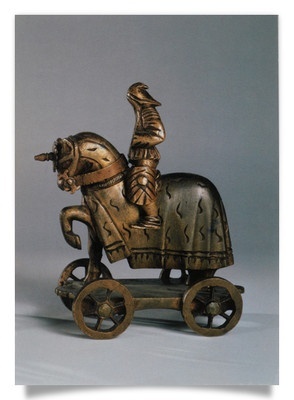
Come away mo chairde, and immerse yourself in the lives of the warm, exciting, romantic and sometimes dangerous lives of the inhabitants of the realm of Rinefield. What better way to enjoy the season than with an epic romantic adventure!
M.T. Magee
 My name is M.T.Magee I write bestselling YA Historical Medieval Fantasy that is beautifully romantic with whispers of Gaelic legend. On Mar. 31st The Treasure of Gwenlais received the 2015 Silver Medal Winner of Ireland's Drunken Druid Award Finalist for IAN Book of the Year Award 2016 for First Novel on Aug. 31st. On Sept.1st 2016 I received the Finalist Award for Readers' Favorite Book Awards Voted #1 On Listopia's Best Fantasy Romance (not urban).
My name is M.T.Magee I write bestselling YA Historical Medieval Fantasy that is beautifully romantic with whispers of Gaelic legend. On Mar. 31st The Treasure of Gwenlais received the 2015 Silver Medal Winner of Ireland's Drunken Druid Award Finalist for IAN Book of the Year Award 2016 for First Novel on Aug. 31st. On Sept.1st 2016 I received the Finalist Award for Readers' Favorite Book Awards Voted #1 On Listopia's Best Fantasy Romance (not urban).I live in New England on our small farm with my husband and son. We raise an assortment of silly goats, quiet rabbits, far too many ducks and chickens, and a high strung Border Collie cross named Gronk.
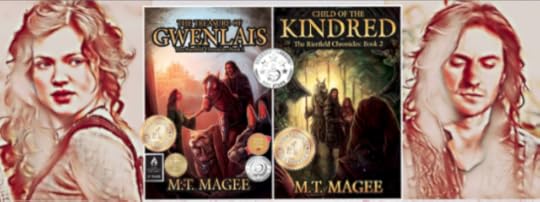
Escape to the award winning mystical realm of Rinefield! Can a young reluctant Princess fulfill her destiny to heal the torn Kingdoms and the heart of a battle hardened warrior Prince? Join Laurel on an extraordinary journey, filled with excitement, treachery, danger and finding a love you only dared dream of! A love story that will leave you breathless, and a world like none imagined! An unforgettable fantasy saga with characters you will fall in love with!
Amazon US Amazon UK

Published on December 07, 2017 23:00
December 6, 2017
Christmas at the Court of Edward the Confessor #Christmas #History @Paulalofting

 Christmas at the Court of Edward the ConfessorBy Paula Lofting
Christmas at the Court of Edward the ConfessorBy Paula Lofting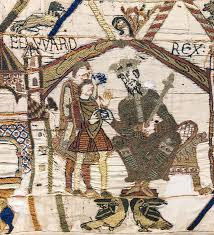
Winter began in November, according to Anglo-Saxon tradition. The 7thof November to be exact, and from the 15th of November, 40 days before the Christmas season began, it was a time of fasting and alms giving, which was the origin for gift-giving at Christmas. ‘Christmas’, comes from the Anglo-Saxon, Cristesmæsse, a word first recorded in 1038. It replaced the old pagan ‘yule-tide’, known back then as Geola and still referred to when talking about yule logs etc. As we know, the early Christian church instructed their emissaries to allow the Christianisation of some pagan traditions, a clever strategy on their part, to encourage people to give up their pagan ways by allowing them to retain some of the features and customs of the old religion. During this time of fasting and strict observance, it was not just the clergy who were expected to fast, attend prayers and vigils, and give alms to the more unfortunates of their world, but the secular communities also. It was a sign of your wealth and status if you could afford to give alms, something that many people were eager to do, for the Anglo-Saxons were as keen as any for their soul to get a free pass to the afterlife.
So, that was a lot of days of hardship for less than half the days in return of feasting! Anyway, that aside, only those who were employed to do necessary tasks, were excused from taking 12 days off work. Quite honestly, I could not imagine anyone complaining about that unless they were one of those who were engaged in those aforesaid important occupations.
Oh, there’s one other little thing I have forgotten, there were no carnal relations allowed during this fasting period, after all, with all the vigils and extra prayers and psalm singing, how was one going to fit in having sex as well? But, should one fail in this expectation, and need absolution to restore their spiritual equilibrium with God, there was always confession and more fasting as penance.
During King Edward’s time, the Christmas period was usually spent at Gloucester. Edward was a keen sporting huntsman, something the church frowned on but were able to forgive because he was pious in other aspects of his life. Since the Forest of Dean was his favourite hunting ground, it seemed natural that after a good Autumn’s hunting, that he would spend Christmas at King’s Holme in Gloucester. He did, however, spend his last Christmas on this earth in the newly built palace of Westminster, whilst the new church of St Peter was consecrated that year, in time for the celebrations and his funeral.
Poor Edward. His life’s work, just ready for him to enjoy and he pops his clogs. At least he got to see it glorified to God, that must have been a very auspicious day for him, for he would be able to go to his rest with the knowledge that he had help to build one of the finest churches this side of the British Channel. No matter though, for the Normans would soon rebuild it more to their taste after the conquest.
It couldn’t have been much fun that year of 1065, when he succumbed at last to the illness that seemed to have been brought on by the exile of his favourite courtier, Earl Tostig. The stress of losing Tostig and having to give in to the recalcitrant northerners a few months earlier, obviously affected him badly, because hitherto, he had been quite robust and sprightly for an old man of sixty; a great age in those times. So, Christmas of 1065 would have been quite a miserable one that year, so perhaps we should hearken back to happier times, and the Christmas of ’64, when having had a good hunting session during the month of October and some of November, Edward was ready to put on his virtuous head, start the fasting and alms giving and settle down to pottage for supper each night until the 25th December when the holiday would begin.
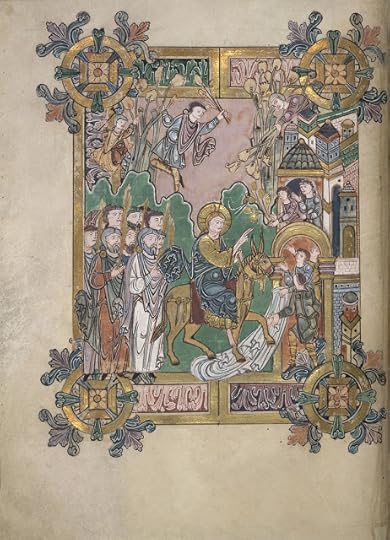
Kings Holme (now known as Kingsholm) was the site of an old Roman fortress, significant in size to have made the Roman city an important strategic place. We know that there was definitely a palace located there in 1051, and possibly, it may have dated back much further. At least by 1064, the palace was a well-used one, having been one of three important palaces in Edward’s England, besides Westminster, in London, and Winchester. A hoard of early 11thc coins was found at the site and said to be a large collection from probably a wide area, indicating that this was not and just any old burh. To add to the evidence of its possible magnificence, excavations at the site have uncovered indications of large timber buildings dating to around this time.
We cannot say what King Edward’s palace consisted of for sure, but there must have been quite a few domestic and guest quarters amongst the buildings found. At Christmas time, the whole of Edward’s court would have been present in Gloucester, and among them, his secular officials as well as many foremost ecclesiasticals, bishops and abbots and possibly some Abbesses, some of whom were very powerful indeed. Many of the king’s thegns would have been there, and possibly they brought their wives with them, perhaps some brought their sons also, and maybe their daughters, to be presented at court. If those who owed service to the king couldn’t make it for whatever reason, then they would no doubt have to send a representative. The most important of the king’s guests, would have been the archbishops, Ealdred of York and Stigand of Canterbury, and leading earl of the realm, Harold Godwinson. Aside from them, the other lords of the earldoms: Tostig of Northumbria, Morcar of Mercia, Oswulf of Bamburgh, Leofwin and Gyrth Godwinson, earls of the South Eastern Counties and East Anglia respectively, and Waltheof, son of the great Siward, Tostig’s predecessor. No doubt they would also have brought their wives and perhaps their families too, not to mention their retinues, servants, and household guards. No wonder there were several large buildings found on the complex, they would have needed them to house everyone.
Its most likely that Edward’s great feasting hall was a timber construction, as no evidence for stone foundations have been found during the excavation. Edward had been building his wonderful complex at Westminster in stone, but that was a special undertaking that had been under construction for years. The king’s feasting-hall was basically a large-scale version of the smaller halls that one might find on manorial estates. It was rectangular, with doors in the longest sides, front and back, and possibly with ante chambers at both ends, perhaps one of those rooms could have been where the king and queen slept. The space inside would have been large enough to contain a good few hundred people and was the heart of the community during the Christmas period. During the last few days of fasting before the feast of Christ, the final touches to the décor would have been carried out. Around the walls, were murals decorating the lime washed walls and possibly hung with fine embroidered hangings depicting biblical scenes. Holly and Ivy would have decked the hall, a throw-back to earlier times. Things might have changed somewhat from the early days of the mead-halls as described by Steven Pollington in his book The Mead-Hall, where a lot of the symbel (the feasting) had its rituals rooted in Pagan beliefs and old Teutonic ideals based on the ways of warriors. However, the principle that the hall was the place where the joys of life could be found, drink, merriment, and good times, remained even in the 11thc. The feasting-hall, or the mead-hall, was where it all happened, much like how some of us nowadays see pubs, clubs, restaurants, and bars.

In the early Anglo-Saxon halls, the lord, chieftain or senior clansman would have had a dais erected on both sides of the hall. The side where the chieftain sat, was raised higher than the guest’s dais across the hearth, obviously to enforce his higher position within the hierarchical structure of the feast. In Edward’s time, if there was another dais, it would most likely have included the most prominent of his people that were not already seated with him around his table.
People often have this idea that the wooden halls of Anglo Saxon times were draught-ridden, smoky, cold places, and this must have been so, but once that big central hearth got going, and the smoke rose upwards to the apertures in the gables at each end of the rectangular building, the place could be surprisingly clear and warm. Obviously the closer you were to the king and the hearth, the more important you were. Servants would usually sit on the floor if there was no room at the tables, or boards as they were often called, being mainly trestles with wooden boards resting on top of them. No doubt, however, King Edward would have had a rather more refined structure for his meal, with his high-backed chair, brightly coloured and bedecked with cushions. His queen, Edith, who sat with him, would also have sat in an ornate chair, but it is also possible that for the Christmas celebrations, they may have wanted to make use of their thrones, both of which were said to have been decorated with gold and precious gems. I for one would not have wanted to spill anything on those beautiful cushions once I’d got a little merry.

The most important tables would have been covered with the best table linen, the best accoutrements and have the best choice cuts of meat. Feasting in Anglo Saxon times would have been nothing without meat, turkey would not have been on the menu. For the most highest-ranking nobles, meat would have included wild boar and venison, most likely hunted by Edward himself, and preserved for the occasion. Edward would have loved that, to see the products of his efforts being enjoyed by his guests. Apart from these meats which would have been consumed as said earlier by the most noble of the nobility, there would have also been available goat, lamb, and pig. Vegetables were also consumed, and were often preserved by drying by the fire, just as slaughtered animals were. Items such as mushrooms, herbs, fish, and seaweed, were routinely dried and smoking also was a popular method, such as the carcasses that were hung in the rafters.
Medieval people of this time did not know sugar, but they enjoyed sweet tastes, and would have used honey to sweeten their cakes, or dip their breads in. There were opportunities to flavouring their food with salt and pepper, ginger, cinnamon, very expensive commodities. It’s also conceivable that they stewed fruit and served it with cream and it is said that a form of jelly was made from cow heels.
Often a hall’s hearth was used for cooking over, with great pots hanging on chains with stews of pottage, or with pork bubbling away in them with leeks, onions, garlic, and carrots as part of the ingredients. But in larger halls like Edward’s, the hearth was for warmth and light only, for apart from perhaps some shuttered windows in each end of the hall, there would not have been much light without the hearth. They of course had candles made from bees wax for the wealthy, and tallow from animal fat for the poor. I’m sure that Edward made himself available to the bees wax makers, for they looked and smelled better than animal fat. Torches were available in their sconces on the walls to give off more light and warmth in this cold, dark season, and rushes dipped in fat also made light.
The roasting of meats would have been done over hearths in the kitchens which were in buildings separate from the hall. Food would have been brought to the tables on huge platters carried in by members of the king’s household to be served to the guests. I hope the kitchens weren’t too far from the hall, for at this time of years it would have been very cold, perhaps even snowing.
So, we have a picture of what the hall would have looked like, decorated for Christmas with holly, ivy and mistletoe and frescos and wall hangings in bright colours depicting the nativity and other biblical representations. The hall would have been full to brimming with people seated at tables, standing, or sitting on the rush mats with Edward’s hounds. The day would have begun with people attending early morning mass in the precinct’s chapel, which would most likely have not accommodated everyone, with the excess standing out side to try and hear the mass. I’m sure that if both archbishops were present, they would have participated in the mass, perhaps taking it in turns. Then everyone would pile into the hall to break their fast, glad that the ritual of abstinence was over at last and they could get their gnashers stuck into what they really wanted to eat, which was meat. But for their first round of food they would have had breads, finely sifted for the top tables, until the bread was white, which was what they preferred to eat, if they had the chance, pretty much like us. And cheese and butter, boiled eggs washed down by ale.
As the day progressed, during the feasting which was pretty much nonstop, there would have been all sorts of entertainment, in between going to mass of course. There were scops, jugglers, musicians, singers, acrobats, dancers, and jesters. The king’s own scop would have sung his praises, about how wonderfully kind, brave and majestic he was. He must have been a great liar, also. There would have been dancing, boasting, or flyting, where men (and perhaps women, too) would compete in a game of words. Perhaps the epic tale of Beowulf would have been told in the evening, when people were subdued, and more willing to listen. It is said that Edward enjoyed the poems and songs of the scops, and I wouldn’t have been surprised to hear he knew a song or two himself.
One thing the Anglo-Saxons loved was a good knees up and after the serious fasting, praying, and alms giving, they must have looked forward to letting their hair down and getting merry, sloshed even, and knowing the old English, they would have loved a scrap or two during the day, I hope no one got killed, but an English feast would not have been an English feast without a fight somewhere in the middle of it. Then everyone would have made amends, said their sorries (hopefully) and all would be well again.
For it was Christmas, a time for good will to all men, wasn’t it?
With much thanks to Regia Anglorum for the photos of the Saxon Longhall in Wychurst, Kent.Stephen Pollington, 2003 The Mead Hall – Feasting in Anglo-Saxon England Anglo-Saxon Books, Thetford, England.Frank Barlow,1997 Edward the Confessor Vale University Press, Newhaven and London.British History online.
Paula Lofting
 Paula Lofting’s début novel, 'Sons of the Wolf' was first published with the assistance of SilverWood Books in 2012. More recently she has republished it with her new publishing company Longship Books, in kindle. A new paperback version will be published by June. It is a story set in the years leading up to the Norman Conquest of England and the first in the Sons of the Wolf series, about this amazing time in English history.
Paula Lofting’s début novel, 'Sons of the Wolf' was first published with the assistance of SilverWood Books in 2012. More recently she has republished it with her new publishing company Longship Books, in kindle. A new paperback version will be published by June. It is a story set in the years leading up to the Norman Conquest of England and the first in the Sons of the Wolf series, about this amazing time in English history.She has always admired the works of Sharon Penman and Bernard Cornwell, Edith Pargetter and Mary Stewart, amongst many others. History is a great love of hers and her interest in the subject goes beyond that of the keyboard. She also enjoys Anglo-Saxon re-enactment with Regia Anglorum.
You can find Paula... Website Blog Facebook Twitter
Sons of the Wolf
p.p1 {margin: 0.0px 0.0px 0.0px 0.0px; font: 12.0px Helvetica; color: #4787ff; -webkit-text-stroke: #4787ff} p.p2 {margin: 0.0px 0.0px 0.0px 0.0px; font: 12.0px Helvetica; -webkit-text-stroke: #000000} span.s1 {font-kerning: none; color: #cc6600; -webkit-text-stroke: 0px #cc6600} span.s2 {text-decoration: underline ; font-kerning: none; color: #4787ff; -webkit-text-stroke: 0px #4787ff} span.s3 {font-kerning: none}
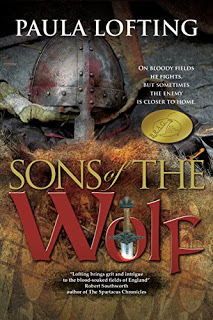 1054, pious King Edward sits on the throne, spending his days hunting, sleeping and praying, leaving the security of his kingdom to his more capable brother-in-law Harold Godwinson, the powerful Earl of Wessex. Against this backdrop we meet Wulfhere, a Sussex thegn who, as the sun sets over the wild forest of Andredesweald, is returning home victoriously from a great battle in the north. Holding his lands directly from the King, his position demands loyalty to Edward himself, but Wulfhere is duty-bound to also serve Harold, a bond forged within Wulfhere's family heritage and borne of the ancient Teutonic ideology of honour and loyalty.
1054, pious King Edward sits on the throne, spending his days hunting, sleeping and praying, leaving the security of his kingdom to his more capable brother-in-law Harold Godwinson, the powerful Earl of Wessex. Against this backdrop we meet Wulfhere, a Sussex thegn who, as the sun sets over the wild forest of Andredesweald, is returning home victoriously from a great battle in the north. Holding his lands directly from the King, his position demands loyalty to Edward himself, but Wulfhere is duty-bound to also serve Harold, a bond forged within Wulfhere's family heritage and borne of the ancient Teutonic ideology of honour and loyalty. Wulfhere is a man with the strength and courage of a bear, a warrior whose loyalty to his lord and king is unquestionable. He is also a man who holds his family dear and would do anything to protect them. So when Harold demands that he wed his daughter to the son of Helghi, his sworn enemy, Wulfhere has to find a way to save his daughter from a life of certain misery in the household of the cruel and resentful Helghi without compromising his honour and loyalty to his lord, Harold.
Sons of the Wolf is a panoramic snapshot of medieval life and politics as the events that lead to the downfall of Anglo Saxon England play out, immersing the reader in the tapestry of life as it was before the Doomsday Book. With depictions of everyday life experienced through the minds of the peoples of the time; of feasts in the Great Halls to battles fought in the countryside, it cannot help but enlighten, educate and entertain.
Amazon

Published on December 06, 2017 23:00
December 5, 2017
Christmas in the time of Edward III #history #Christmas @anne_obrien


Christmas in the time of Edward III
By Anne O'Brien
Come to the Celebration at the Court of Richard of Bordeaux ...

It is the year 1377 and the life of the old King, Edward III, is drawing to a close. The heir to his throne is Richard of Bordeaux, ten years old, the only son of Edward of Woodstock, Prince of Wales, sadly dead last year. It is January, but festivities continue at young Richard's court. Come and join them in the festivity. Take a peek into the life of the child-prince who will be king before you are a year older.
Here in the streets of London a great entertainment is gathering, a true carnival, and all to honour the young prince. The Londoners are already filling the streets, together with a vast body of mummers, more than a hundred of them, all gaudy in masks and costumes.
Watch as they go by, the shabbiness of their antique garb hidden as dusk approaches and they ride past two by two in red velvet and tawdry damask, faces hidden by masks. And that is not all. There are the feathered false-knights with their squires on horseback. Here comes an Emperor in velvet and fake jewels. And look! A Pope with his retinue of red-clad cardinals followed by the papal legates, the villains with their frightening black masks.
The streets ripple with excitement. The night sky is ablaze with wax torches as the townsfolk make their way along Newgate, through Cheapside and on to London Bridge where they will cross over the Thames.
Follow them. Where are they going? To Kennington, one of the favourite palaces of Prince Richard and his mother the Princess Joan. It is a magnificent palace, built to impress. We will join the throng. But will the gates be open for us? Or perhaps the all-powerful magnates, his royal uncles, will shut us out because we are common folk beneath the disguises, unworthy of their company. Let us in. We have gifts to give the young prince.

We dismount and wait, our torches filling the night air with smoke. The gates open. And there he stands, so small a child but marvellously clad, and so handsome, as his father was handsome. At his shoulder Princess Joan, the Fair Maid of Kent, still beautiful although no longer a young woman. And behind him the three royal brothers, Dukes of Lancaster and York and Gloucester.
To our joy, we are beckoned in. We are made welcome. The Emperor kneels before the royal child and offers him a package which the boy unwraps with glee. It contains two golden dice. We press forward to watch when the Emperor holds out a golden bowl. Silence falls. Prince Richard casts the dice onto a cloth spread on the floor. Will he win the bowl? The prince claps his hands when he does. The Emperor wagers a golden cup. The Prince rolls the dice again. Behold he wins! And now the Emperor wagers a golden ring. When Richard roles the dice he wins again. Of course he does. The dice are loaded in the child's favour. Prince Richard must win on this auspicious occasion.
Why not join in the applause when the Prince laughs with delight. If you are fortunate you will receive one of the gold rings that the mummers pass around the crowd. Will Richard, so generous in his victory, not make a superb king? Now he raises his hand and, at a nod from his mother, servants come with cups of wine for all and we drink liberally, making toast after toast. There is food to eat; fine bread and meat and spiced fruit tarts. Eat your fill, for Princess Joan wishes you to make merry.
Feasting over, it is then that the minstrels begin, their music loud with trumpets and nakers, shawms and sackbuts and pipes. What a clamour! We dance. and so will you. And then to our delight, Prince Richard and the lords join in and dance with us. It is a great celebration, more successful than we could ever have imagined. And so we return to London, exhausted but satisfied.
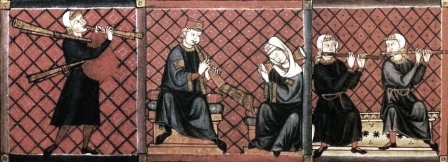
But do not be mistaken. This was no ordinary merry-making on either side. We, the Londoners are bidding for the favour of our future monarch. We wish to show him our support and respect, our loyalty, our pride in the handsome lad, looking forward to the day when we have a young king again to lead the country to greatness. We wish him to smile upon us when he is old enough to make his own laws.
As for Princess Joan, she has her own way to make when her son is King of England. It is hard for a woman to wield power, even as a shadow behind the throne. A woman alone is a weak thing. The wily princess is intent on winning us over to her son's support.
And then of course there is John of Gaunt, Duke of Lancaster, royal uncle, dancing with the rest of us as if never a harsh word had been exchanged between us. He has been less than popular but the princess may have had a word in his royal ear. It would be good policy for him to reconcile himself to the Londoners over a cup of ale and a hectic round-dance.

Remember this lesson in the politics hidden behind the celebrations, when you wake tomorrow with a headache and sore feet. Nothing is as it seems, even the winning of gold fairings by a handsome boy.
 Anne O’BrienAnne O’Brien was born in West Yorkshire. After gaining a BA Honours degree in History at Manchester University and a Master’s in Education at Hull, she lived in East Yorkshire for many years as a teacher of history.
Anne O’BrienAnne O’Brien was born in West Yorkshire. After gaining a BA Honours degree in History at Manchester University and a Master’s in Education at Hull, she lived in East Yorkshire for many years as a teacher of history.She now lives with her husband in an eighteenth-century timber-framed cottage in the depths of the Welsh Marches in Herefordshire, on the borders between England and Wales, where she writes historical novels. The perfect place in which to bring medieval women back to life.Website Facebook Twitter
The Shadow Queen
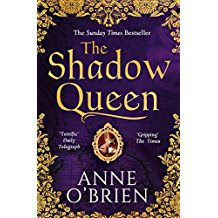 This the story of Joan of Kent, a tale of treachery, power-hungry families and legal subterfuges, in which Joan, a woman of considerable charm and beauty, played a central role at the Plantagenet Court.
This the story of Joan of Kent, a tale of treachery, power-hungry families and legal subterfuges, in which Joan, a woman of considerable charm and beauty, played a central role at the Plantagenet Court.The Shadow Queen
‘What would enhance the pattern of my life further? One word slid into mymind. A seductive word. A dangerous word, perhaps, for a woman. Power.’
From her first clandestine marriage Joan of Kent’s reputation was one of scandal and rumour. Her royal blood made her a desirable bride, but her ambition and passion could become a threat to the stability of the Plantagenet dynasty.
Joan knew what she must do to survive, the political games to play, the alliances she must make, even if one man will always own her heart. But would her ambitions bring her happiness?
A dramatic story of love and loyalty and of the cost of personal ambition, this is the story of the woman who would ultimately seek power as the mother to the ten year old King Richard II, from the shadows of the throne.
Amazon

Published on December 05, 2017 23:00
December 4, 2017
Christmas in the time of Jesus Christ. #Christmas #History @JeanneRichard11


Christmas in the time of Jesus Christ.
By JB Richards

For Christians, down through the centuries, Christmas has been one of the most important holidays on their annual calendar—a holiday centered on the birth of the “Christ-Child”, the one proclaimed to be the Messiah, the savior of the world. Every Christian knows the Nativity story—Joseph and Mary travel from their hometown of Nazareth to Bethlehem, the City of King David, where the young 14-year-old newly-wed bride would deliver a very special child who would be destined to—through his death on the cross—save all the souls of this world, and the next, and fling wide the doors of Heaven for their entry to life everlasting. The recounting of the first Christmas is ingrained into our collective memories, as are any of our most treasured family and religious traditions, and they remain an integral part of each holiday gathering. Here is what the story tells us; The Romans order a census, decreeing that all Jewish males and their immediate families report to the town of their births in order to be counted; alone, and unaccompanied by any other family members or friends, Joseph the Carpenter and a very ripe Mary make an arduous journey from their hometown in Nazareth to Bethlehem in southern Judea; the couple arrives in Bethlehem with the Blessed Virgin already in great distress from the onset of her labor; the exhausted newlyweds are callously turned away from a crowded inn, only to find a last-minute shelter in a stable; singing angels descend from the heavens, enticing shepherds, who are busy tending their flocks in the fields to abandon their wooly charges and come worship at the feet of the Christ-Child; three wise men, Magis from the Far East, set out on an epic journey under the guidance of a special star that appears on the horizon of the western sky—the enigmatic star we now refer to as “The Star of Bethlehem”—the celestial signpost that signalled where the Holy Family awaits their arrival. But, what if I told you that the story of the first Christmas is an embellished tale, mere fantasy passed down through the centuries by generation after generation of clerics who wished to make the birth of Jesus a focal point of a floundering new religious movement that eventually became one of the world’s greatest religions? What if I told you that the traditional Christian version of the birth of Jesus didn’t happen at all the way you think it did? What if I told you that the historical Jesus, familiarly known as “Jesus of Nazareth” and “Jesus Christ”, wasn’t born on December 25th? What if I told you that he wasn’t even born in December?! What if I told you that his name wasn’t “Jesus”, but “Yeshua” (Yeshu/Yeshuah)—the name his mother gave to him, and called him in their native Aramaic tongue? And, what if I told you that the true miracle of Jesus’ life never lay in the fabrication of a Christian fable, but in the charismatic, enigmatic, and brilliant young master, rabbi, teacher, scholar, and healer he turned out to be?Now before you decide that this article is a load of bunk, and I must be out of my mind for thinking that the first Christmas happened any other way than tradition says it did, I ask that you please allow me a chance to explain myself, and I hope that you will take a moment to hear me out before you rush to judgment.As a historian, I am bound to examine fact from fiction in order to reveal the past … to look at what actually happened and what did not. Legend, myth, fable, folklore, and superstition all evolve from misunderstanding, manipulation, and/or a lack of historical data. Here, my goal as a historian is not to attack, dispel, or discount anyone’s belief system, but to present the facts … to tell you the story of the first Christmas based on historical facts and data. As a result, I think that once if you read through to the end of this article, you’ll find, as did I, that the true miracle of Christmas lies not in the contrivances of a Church trying to grow a following, but in the history of one particular man’s life, and how that life forever changed not only his own world, but ours as well.In the year 4 BC, Emperor Augustus Octavian Caesar ordered a census to be performed throughout the Roman Empire. Each adult male citizen of the empire was to personally appear before the census taker in the town of their birth along with their wives (Records exist showing that polygamy did indeed exist in the time of Jesus.) and dependent children. For many Jewish families in Judea and Galilee, the census was not a bother since family members often remained close to their elders and lived in the same community where they were born. For other citizens of the empire, however, a journey back to the place of their birth would be a terrible inconvenience, requiring much planning, especially if the location was a great distance from their current residence. With this in mind, the Romans granted time for families to travel, and a firm date was set by which all citizens were to report and register. (Some historians suggest a period of six months to a year might have been the norm.)The gospels tell us that Joseph was born in a village called Bethlehem, but at the time of the census, he and his family were residing in a small backwater town that we now know as Nazareth, where he worked as a tekton, which in Hebrew means “one who works with his hands”. Joseph would have spent much time planning such a trip, but to which Bethlehem did he belong—the Bethlehem in Judea that was situated relatively close to Jerusalem, or the recently-discovered tiny village called the “Bethlehem of the North” just a few miles away from Nazareth in Galilee?History presents two possible scenarios for the trip Joseph and his family undertook. The first option is that he took his family south to the Bethlehem in Judea, the one familiarly associated with the Nativity story. The second option was that Joseph and his family traveled to Bethlehem-of-the-North, a tiny Galilean village—if one could call it that, for it seemed to have consisted of perhaps less than a dozen families. Taking into account the first option—Bethlehem in Judea—and having been given adequate time to travel to the census locale, it would seem unlikely that Joseph would make an arduous trek to a far-off place with his new wife due to deliver any day. Why would he take such a risk, placing the child’s life—and perhaps Mary’s as well—in great jeopardy, when there were much safer times to travel: either at the very beginning of her term, or after the child had been born?In ancient times, Jews were called to the Holy City of Jerusalem to worship HaShem (the Lord) during the Pilgrimage Festivals three times a year. These holidays were Pesach/Passover (celebrating the Exodus from Egypt), Shavuot/the Feast of Weeks (when HaShem gave the Torah to Moses), and Sukkot/the Festival of Booths (symbolizing the 40 years of wandering in the desert). Although Jews were expected to be present in Jerusalem to celebrate these holidays each year, exceptions were made for families who were experiencing financial difficulties, health problems, or other exceptional issues. Considering the state of her pregnancy, it seems highly unlikely that Joseph would have chosen to take Mary on a long pilgrimage, lasting many days, to travel south to either Jerusalem or Bethlehem with her time of delivery so near. Mary would have been greatly tasked to travel to Bethlehem (in Judea) for the purposes of the census, then move on to Jerusalem to celebrate one of the aforementioned holidays—or vice verse. But, keeping Jesus’ birthday in mind, even if Joseph wanted to kill two birds with one stone (to attend the festival and register for the census), it makes no sense that Bethlehem in Judea would be the place of Jesus’ birth since the respective festivals do not occur anywhere around December 25th. Bethlehem-of-the-North would seem a far better candidate to host a December birth for Jesus considering its relatively close proximity to Nazareth. After all, the small hovel could support the theory that Joseph and Mary’s journey to participate in the census may have taken place in December, and the reason is two-fold—Joseph may have decided to take Mary to his own birthplace for the birth of her first son. The town of one’s birth in those days held some significance to families who wished to trace their bloodlines back to the first tribes, And while there for Jesus’ birth, it would be a simple matter for Joseph to register for the census as he was required to do. Unfortunately, History has so far stood silent on the subject of Jesus’ birthday, presenting a conundrum in verifying that either travel scenario took place and there are no documented records to rely on for the facts. Births, marriages, deaths—or anything else for that matter—went undocumented, challenging scholars who wish to research such events today. So, why was the date of December 25th chosen as Jesus’ birthday in the first place? Is there some significance to this date that would enhance Jesus’ notoriety and Christianity’s claim that he was the long-awaited Messiah? December 25th is a central date that coincides with a much-beloved, heavily-celebrated, and popular pagan holiday—the Feast of Saturnalia, and the winter solstice. In the early days of the Church, it was difficult, at best, to entice converts into leaving their wild celebrations and worship of a pantheon of false gods to follow the Way of Christ. The early Church patriarchs usurped both of these wildly popular winter festivals in order to lure followers to the Christian faith, and Jesus birthday was forever celebrated as December 25th.
So, when was Jesus real birthday? Is there any way to find out when it was? Here’s a bit of amazing news … modern Christian scholars, New Testament experts, and mathematicians, who banded together under a single research project—to find out when Jesus was born—have actually met success in calculating the month of Jesus' birth. How? They used actual historical records about verifiable documented events that took place around the time of his birth, including the Roman census, the appearance of the Star of Bethlehem, records on the reign of Herod the Great, and other sources such as the synoptic gospels, the Nag Hammadi Library and the Gnostic gospels, and astronomical records kept by the magi of Persia, and the sages of Indie and the Far East. It took a great deal of effort to piece together such an overwhelming amount of research, but experts finally found an answer! They deduced that Jesus was born in the Jewish month of Nissan/April. (On a side note, it is curious that the month of Nisan falls under the sign of Aries the Ram, and many of the qualities of this astrological sign describe the personality of Jesus as described in the traditional gospels. The gospels also mark Jesus' crucifixion and resurrection as having taken place during Pesach/Passover in the month of Nisan in 30 CE.)
Another beloved Christmas tradition revolves around the Star of Bethlehem. Was this astronomical phenomenon an actual star, or could it have been something else entirely? Experts have disputed the real identity of Star of Bethlehem for centuries. Was there a celestial event that accompanied the birth of Jesus between 6 BC-6 CE that can estimate the year of his birth? Because astronomical records go back thousands of years, it was a simple matter to research those documents. What researchers found was astonishing! Indeed there were a handful of events that could have been associated with what the gospels describe as “a star that appeared in the heavens” at the time of Jesus’ birth. One possibility was a triple alignment between the Sun, the Earth, Jupiter and Saturn, making it appear as though there is a blazing star in the heavens in the year 4 BC. The second event, recorded by astronomers in what is now modern-day China, took place in 5 BC when a bright comet appeared in the constellation of Capricorn. A third option is that the Star of Bethlehem was the result of a nova—a star exploding in the heavens. This event would have appeared as a beacon of light, as bright as the moon, that would have lasted anywhere from a few days to several months in the northern constellation of Aquila in 4 BC. Oddly enough, a star going nova is the best candidate for the Star of Bethlehem since—in the eyes of a caravan of Magi advancing from the Far East—the orb would have seemed to sit suspended right over Jerusalem!Christmas cards sometimes depict Joseph leading Mary, who is comfortably and serenely seated on a camel, toward the little town of Bethlehem. But did Joseph and Mary really travel alone from Nazareth to their destination? The gospel tells us that Jesus had four brothers—James, Joses, Judas, and Simeon—and sisters (The gospel is not clear on how many sisters Jesus had or what their names were.). Who were these siblings? Were they children of Joseph from a prior marriage? Were they children Mary had with Joseph after she gave birth to Jesus (This would negate the Catholic belief that Mary was a perpetual virgin for the entirety of her life with Joseph.)? If the siblings were older than Jesus, did they accompany their father and his newlywed bride to either of the two Bethlehems for the census? Of course, there is no way to determine the true status of Jesus’ siblings, but if they were the product of Joseph’s prior marriage, they would have traveled along with him and Mary to be counted in the census as part of their family. Mary would have felt more comfortable traveling with several family members around—especially if Joseph’s daughters were of age to help, and the possible addition of spouses and grandchildren for Joseph’s progeny suggests the Holy Family may have been much greater than the three original members we identify today.If Jesus did have older siblings who were adults, it would have made the trip to either of the Bethlehems that much easier. Rather than travel alone, Joseph’s family would have either ventured a short distance as a group, or—if they were headed further—would have joined a caravan traveling to their destination. Upon arrival, they would have sought relatives for lodging.The vision of Jesus lying in a manger is ingrained into our Christmas traditions. Just why do the gospels say that Joseph and Mary were relegated to a stable rather than a resident dwelling upon their arrival in Bethlehem? As I iterated before, Joseph was given plenty of time to plan for a trip to his birthplace. Could he have contacted his family in Bethlehem in advance and made them aware of his imminent arrival? Why would he risk taking a woman who was so close to her term to another town if had no place to lodge in advance? You have to admit that Joseph must have taken steps to plan their trip in advance.Families stuck together in Jesus’ time, and many Jewish homes were multiple-level constructions that included add-ons or “wings” to accommodate an ever- growing family. It was not uncommon for several generations to remain in the same home for decades, passing down house, livestock, and other belongings to the next generation. Dwellings took many forms, but most consisted of a lower level—perhaps a dugout or cave, carved out of the bedrock which housed livestock and root vegetables in separate sections, a main story—which may have included a kitchen, common room, atrium, and bedchambers, along with a rooftop level that was used as an outdoor living space for entertaining and sleeping in the temperate months. There were no separate detached dwellings that would be classified as a stable in those times, and families preferred to keep their precious livestock under the noses at night, safe from the grasp of thieves or wild beasts. According to Jewish culture, one would be considered in violation of the law if they turned away an individual seeking shelter. Rather than turning away a needy lodger, that person, and those accompanying him, would be welcomed and set up in any free space in the home, including the root cellar or stable.Thus, the odds that Mary was alone with Joseph when she delivered her first child are slim. Even if she and Joseph—and quite possibly his entire immediate family—could not be refused lodging, may have relegated them to the stable level of a relative’s home, but Joseph’s women kinfolk, and quite possibly a few neighbor-women, would have been eager to attend to Mary the moment she arrived. When Mary began her labor, she would be whisked away … taken to a private area—perhaps a tent or a secluded area of the house where women maintained the purity rituals as they recovered from childbirth or waited out their menses. There, Mary would be assisted in her in her delivery. After giving birth to her child, she would be required to observe the required purification rituals, isolating herself and her attending women from the remainder of the household for a predetermined time (about 7-10 days), Only then would she be considered clean. Only then would she could be allowed to rejoin the remainder of the household. And, what of the manger—did Mary place her child in a manger when she wished to rest? It is possible that, with such a crowded household and with no other implement in hand, Mary did indeed lay her son in a manger, using it as a substitute crib as the babe slept and she assisted her kinfolk with their household chores.In the end, how much of the Christmas story is fact and how much is fiction? The explanations I’ve provided here show how a story, based on truth but enhanced with lore, can become legend. The Christmas story evolved over the centuries, and was passed down by oral tradition over hundreds of years to capture our imaginations and instill belief in a child who was destined to save the world.It’s unlikely that the first Christmas happened the way we see it today. Rather, the story was related from one person to the next. Like every oral tradition, it did not survive intact, and it was not always told in its entirety. More often than not, it was a tale that was exaggerated and elaborated upon, extended to include new details as men, women, and children sat around a crackling fire enchanted by a storyteller sipping from an ample skin of wine.The four gospels included in the New Testament came down from a long line of believers who held tradition and lore in high esteem. The fact is that the first gospel, the Gospel of Mark, was not written down until decades after Jesus’ death. It was a long line of disciples who kept handing down the oral tradition, but it wasn’t until the Council of Nicea met in the 4th-century CE that all the known testaments and stories concerning the life of Jesus were collected. The council members voted for or against inclusion. A decree was sent out by the emperor and his council to the many monasteries throughout the empire, ordering them to destroy any works that weren’t indicated on the approved list. Fortunately, not every monk obeyed the order and a chest full of gospels, codices, and related texts that had been secured and hidden away were later discovered by a future generation thousands of years in the future. At the Council of Nicea, a new creed was formulated, and the four gospels we know today as the synoptic gospels—Mark, Matthew, Luke, and John—along with other familiar texts, such as Acts, Romans, etc., become Church canon. The New Testament was born. Sermons accompanying the readings promoted the approved gospels and heightened the growing legend of the Christ. Priests, bishops, and other powerful men extolled Christ’s virtue, and He was glorified until He was no longer a mere man, but the “Christ”—the One who had died for the salvation of humanity. All ties to Judaism were cut and Jesus ceased being a Jew. Instead, he became the central figure for an illegal fledgling religion that had been around for a few hundred years—Christianity. The folklore around the gospel accounts of Jesus’ life continued to grow and new followers were attracted to the faith. But doesn’t that happen with all epics where the personality of the main protagonist is so appealing and charismatic he becomes a hero for the ages? The first Christmas may never have happened the way we now see it, but the true miracle here lies in the remarkable and charismatic young preacher, familiarly called Jesus of Nazareth (or Rabbi Yeshua to his many disciples), who changed the world with his revolutionary but simple philosophy—“Love one another as I have loved you.” What better legacy could he have left behind for us than that? Please note: I have not cited references in this blog, however I will respond to any questions concerning the research contained in this article via PM or email (at jbrich1226@comcast.net).
JB Richards
 JB Richards is an historian and international award-winning Amazon, Goodreads, and Xlibris author. She holds Bachelor of Arts degrees in Psychology and History. Richards is the founder and driving force behind the Indies Helping Indies Book Review Project (IHIBRP) which she created and initiated in April 2017 to provide qualifying Indie authors with high-quality book reviews and free promotional services. She is also the founder of the Indie Fabs—a group of Indie authors equally dedicated to offering free assistance, guidance, and support to independent authors with the aim of building strong bonds of cooperation and fellowship within the Indie community. She has been a member of the Women Fiction Writers Association (WFWA) and The International Women’s Writing Guild (IWWG) since 2016. In November 2016, Richards was nominated for “Top Female Author” by TheAuthorsShow.com. In April 2017, she received a nomination for “Author of the Year” in the Indie Author Books 2016 Readers’ Choice Awards. Richards’ multi-award-winning debut novel, "Miriamne the Magdala"—Grand Prize Winner of the 2017 Golden Quill Award—was published after more than 20 years of extensive research into the lives and times of Jesus Christ and Mary Magdalene. Her reimagining of their lives together provides an intimate, yet provocative and controversial look into a relationship nourished by a rich culture, forged by ancient traditions, transformed by an insurmountable love, and threatened by a turbulent and oppressive political landscape. Her upcoming sequel, “Yeshua the Christ: The Silk Road”, is due for publication in 2018. Richards is a lifelong resident of Manchester, New Hampshire, where she resides with her husband, Daniel, her son, Matthew, and her two dogs, Monty and Ayden.
JB Richards is an historian and international award-winning Amazon, Goodreads, and Xlibris author. She holds Bachelor of Arts degrees in Psychology and History. Richards is the founder and driving force behind the Indies Helping Indies Book Review Project (IHIBRP) which she created and initiated in April 2017 to provide qualifying Indie authors with high-quality book reviews and free promotional services. She is also the founder of the Indie Fabs—a group of Indie authors equally dedicated to offering free assistance, guidance, and support to independent authors with the aim of building strong bonds of cooperation and fellowship within the Indie community. She has been a member of the Women Fiction Writers Association (WFWA) and The International Women’s Writing Guild (IWWG) since 2016. In November 2016, Richards was nominated for “Top Female Author” by TheAuthorsShow.com. In April 2017, she received a nomination for “Author of the Year” in the Indie Author Books 2016 Readers’ Choice Awards. Richards’ multi-award-winning debut novel, "Miriamne the Magdala"—Grand Prize Winner of the 2017 Golden Quill Award—was published after more than 20 years of extensive research into the lives and times of Jesus Christ and Mary Magdalene. Her reimagining of their lives together provides an intimate, yet provocative and controversial look into a relationship nourished by a rich culture, forged by ancient traditions, transformed by an insurmountable love, and threatened by a turbulent and oppressive political landscape. Her upcoming sequel, “Yeshua the Christ: The Silk Road”, is due for publication in 2018. Richards is a lifelong resident of Manchester, New Hampshire, where she resides with her husband, Daniel, her son, Matthew, and her two dogs, Monty and Ayden. Useful LinksWebsite & Blog Amazon Author’s Page IHI Book Review Project(IHIBRP) Facebook Twitter Google+ Goodreads Pinterest Instagram
Miriamne the Magdala
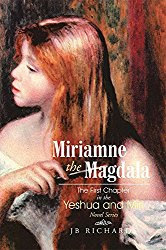
“Miriamne the Magdala” tells the richly detailed story of an ancient Jewish family in crisis. When twelve-year-old Miriamne and her 13-year-old long-lost cousin Yeshua are unexpectedly reunited, sparks fly. But the grave illness of a parent causes turmoil and anxiety within the two related Houses, especially for Yeshua who recognizes that his earthly Mission is fast upon him and his miraculous powers are growing out of control. As the life-and-death situation escalates, he begins to question his allegiance to his Divine Father while Miriamne finds herself torn between her newfound love for Yeshua and her premonitions about his unimaginable fate.Amazon B&N Xlibris

Published on December 04, 2017 23:00
The Coffee Pot Book Club
The Coffee Pot Book Club (formally Myths, Legends, Books, and Coffee Pots) was founded in 2015. Our goal was to create a platform that would help Historical Fiction, Historical Romance and Historical
The Coffee Pot Book Club (formally Myths, Legends, Books, and Coffee Pots) was founded in 2015. Our goal was to create a platform that would help Historical Fiction, Historical Romance and Historical Fantasy authors promote their books and find that sometimes elusive audience. The Coffee Pot Book Club soon became the place for readers to meet new authors (both traditionally published and independently) and discover their fabulous books.
...more
...more
- Mary Anne Yarde's profile
- 159 followers



